




Portrait of a Changing Community BY
ROBERT BRYM


Wishing everyone a meaningful and peaceful Passover Spring brings renewal, and hope for good days



Past President: Lewis R. Mitz, President and Chair: Joel Reitman, C.M., Vice Chair: David Golden, Vice President: Gary Grundman, Vice President: David C. Rosenbaum, Treasurer: Doron Telem, Secretary: Carol Ryder, Members of the Board: David Berger, Ariela Cotler, Elliott Eisen, Heather Fenyes, Dr. Jacques Gauthier, Sarah Krauss, Lorri Kushnir, Paul Levine, Connie Putterman, Danny Ritter, Cheryl Rosen, Evelyn Bloomfield Schachter, Ari Shachter, Judi Shostack, Joanna Mirsky Wexler, Joseph J. Wilder, K.C., Gustavo Zentner.


Executive Director: Nomi Yeshua nomiy@jfjlm.org
Donor Relations Coordinator: Tania Haas thaas@jerusalemfoundation.ca
The Jerusalem Foundation of Canada: 130 Queens Quay East Suite 1110 – West Tower Toronto, ON M5A 0P6 Tel: 416-922-0000 www.jerusalemfoundation.org






DUSTIN
(VW,


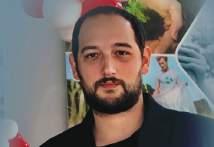
DANIEL STEIN (Pre-owned, Luxury and Financing Approvals) 416-648-5330 dstein@getautofinance.ca

ADAM STEIN (Kia, Hyundai, Mazda) 416-666-3216 astein@plazaautogroup.ca






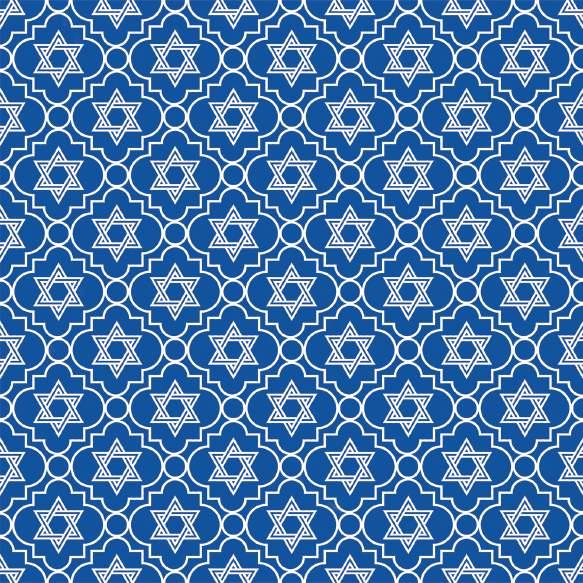





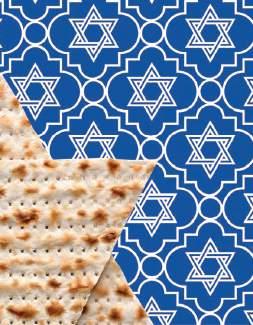
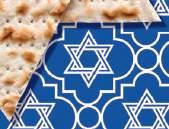
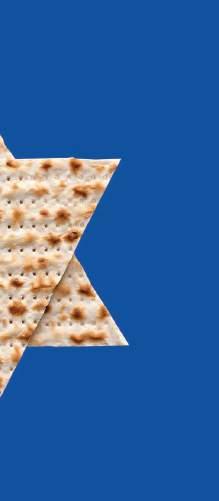





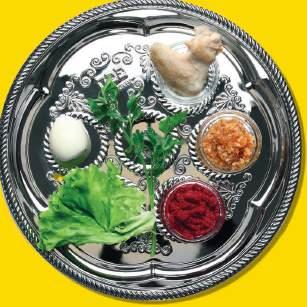
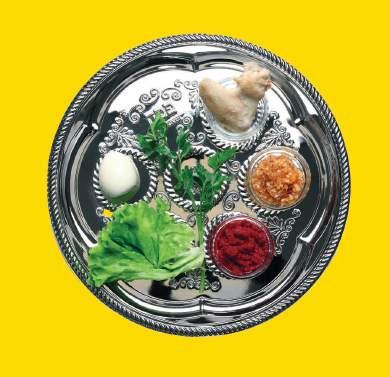
•Vince & Franca’s NF Vaughan
• Anthony’s NF Vaughan
•John & Danielle’s NF North York



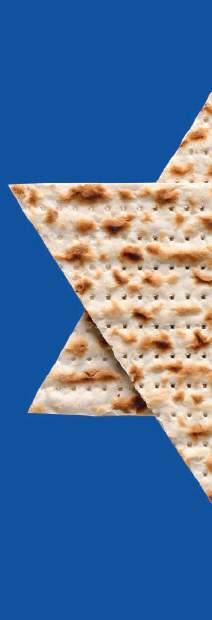
•Carlo’s NF North York
• John’s NF Innisfil


SPRING 2025 Features 5785 ביבא pg
44
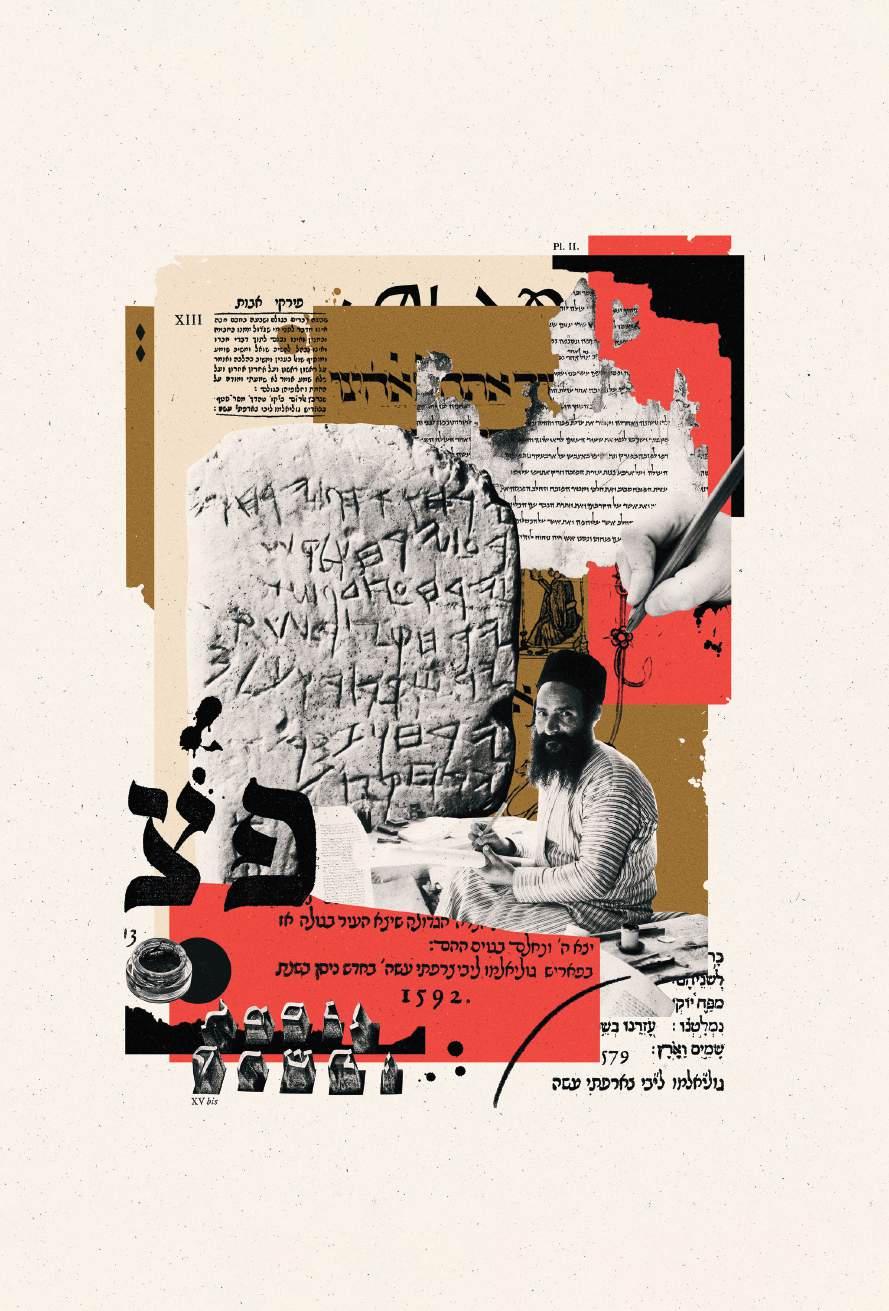
36 Who Counts?
The present state of, and future prospects for, Jews in Canada. by ROBERT
BRYM
44 Word Play
Designing a magazine starts with its name. A very Jewish history of typography. by CAROL
MOSKOT
COREY MINTZ

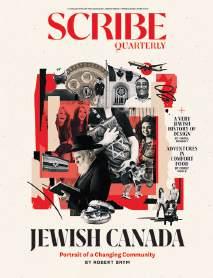
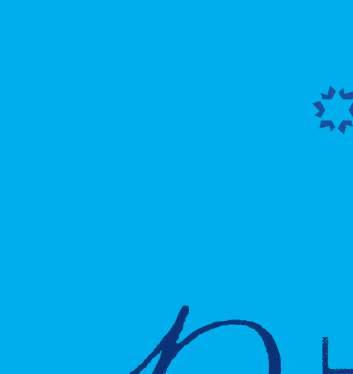

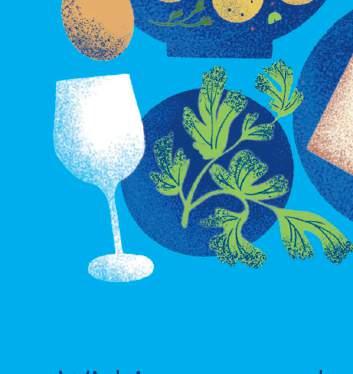

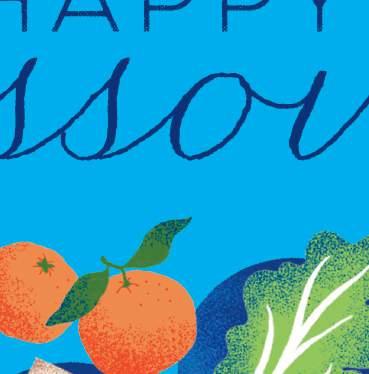
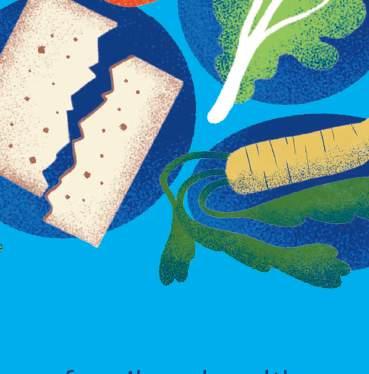
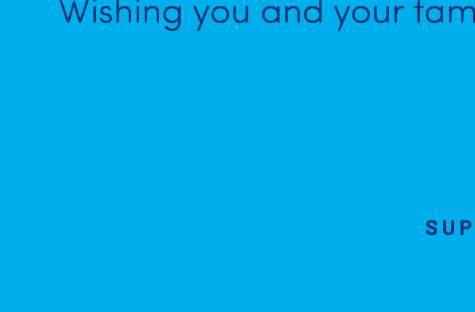

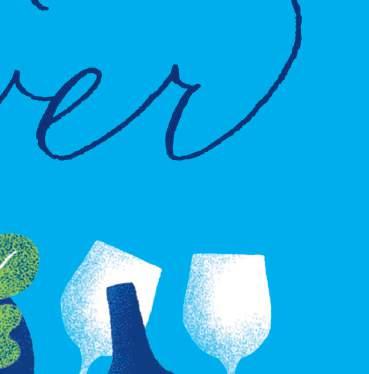








SPONSORED CONTENT





One of the most common dilemmas families face is deciding between 24/7 in-home support for a loved one with dementia or transitioning them to a specialized dementia care residence.
As we move through 2025, we must recognize that things have changed dramatically due to COVID-19, and family caregiver burnout is higher than ever. The emotional, psychological, and financial strain of caregiving can overwhelm the family, while the loved one’s condition and quality of life often deteriorate, as we saw through the pandemic.
As Passover approaches and we reflect on the journey to liberation central to the holiday, there is a
profound lesson that resonates deeply within the world of family caregiving. It’s a timely reminder that the caregiving journey can be all-consuming and isolating. Please know you are not alone, let One Kenton Place be there for you as you navigate this journey.
For those experiencing burnout, we find the greatest freedom comes from the support of our specialized dementia care residence, where both families and their loved ones can find renewed connection and peace of mind.
At One Kenton Place, we recognize the difficulties families face and are committed to delivering the
care and stability they require. Through our tailored approach to dementia care, we offer families assurance while enhancing the well-being of their loved ones.

For excellent care, it’s the one

AS WE STEP into spring, we find ourselves at the intersection of renewal, reflection, and growth. It’s the season when nature awakens from the quiet of winter, and we are reminded that new beginnings are always possible. Spring is also synonymous with Passover, a holiday that celebrates the Jewish story of liberation and renewal. Just as the Israelites were given a new beginning, The CJN is embarking on a journey of our own. The story of Passover invites us to reflect on the importance of freedom, the power of community, and the joy that comes with embracing a fresh start.
We too are embracing this sense of transformation and renewal with the launch of our reimagined magazine — Scribe Quarterly — a fresh way to connect with, inform, and inspire our community.
Our magazine, and many exciting projects we are introducing mark a new chapter in our own story: a chance to create, build, and learn together.
In this spirit, we are thrilled to announce the launch of not just our magazine, but also our redesigned website, which will serve as a dynamic hub for all things related to our mission and community. With improved navigation, engaging stories, and a sleek design, we hope
you’ll find it a go-to source for the latest news, insights, and perspectives.
This spring, we are also launching two exciting podcasts that promise to spark conversation and build connections. The first centres on interfaith discussions and community building; it will create opportunities for people from different backgrounds to break down barriers and, we hope, find common ground. The second is about personal finance, and will focus on giving you the tools and knowledge you need to navigate the changing economic landscape and make informed decisions about your future.
We rely on your support to make these projects possible and ensure that our journalism remains accessible to all, free of charge. As a registered journalism organization with the Canada Revenue Agency, we provide tax receipts for all donations. You can donate at thecjn.ca/donate or by writing to donate@thecjn.ca.
As we enter this season of renewal, we invite you to join us on this exciting journey. We hope our magazine, website, and podcasts will provide you with inspiration, insight, and a sense of belonging as we grow together. Here’s to new beginnings, to learning, to community — and to a season full of promise.
MICHAEL WEISDORF THE CANADIAN JEWISH NEWS CHIEF EXECUTIVE OFFICER
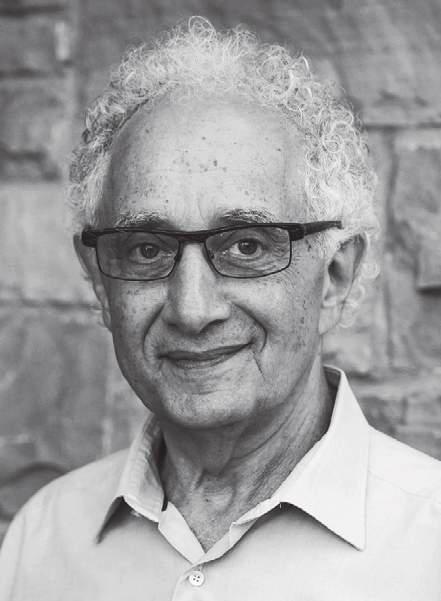
ROBERT BRYM
“WHO COUNTS?” P.36

MARÍA HERGUETA
“WHO COUNTS?” P.36
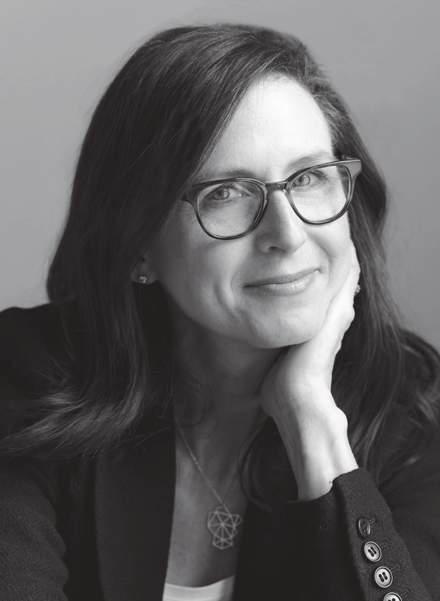
CAROL MOSKOT
“WORD PLAY” P.44
ROBERT BRYM, FRSC, is emeritus professor of sociology at the University of Toronto. His research has focused on the politics of intellectuals, Jewish emigration from the Soviet Union and its successor states, the second intifada, and Jews in Canada. He has won numerous awards for his published works and teaching.
MARÍA HERGUETA, is a Spanish illustrator living and working between Barcelona and southern France. She studied Fine Arts and has been working as an illustrator for 10 years. Her work has appeared in The New York Times, The Wall Street Journal, The Washington Post, and other publications.
CAROL MOSKOT is the art director of Scribe Quarterly. Her studio, Carol Moskot Design + Direction, focuses on the intersection of publication design and storytelling. She’s led the redesigns of Toronto Life, Maclean’s, and The Globe and Mail in Canada, and Commentary and Jewish Living in the U.S.
SCRIBE QUARTERLY is a magazine about Jewish life, culture, and ideas a reader's guide to the contemporary Jewish world.
EDITOR IN CHIEF
Hamutal Dotan
ART DIRECTOR
Carol Moskot
CONTRIBUTING EDITORS
Phoebe Maltz Bovy
Avi Finegold
Marc Weisblott
COPY EDITOR
Leah Borts-Kuperman
DESIGNER
Etery Podolsky
THE CJN
CHIEF EXECUTIVE OFFICER
Michael Weisdorf
GENERAL MANAGER
Kathy Meitz
ADVERTISING SALES DIRECTOR
Grace Zweig
BOARD OF DIRECTORS
Bryan Borzykowski President
Sam Reitman
Treasurer and Secretary
Ira Gluskin, Jay Rosenthal
Jacob Smolack, Elizabeth Wolfe
FOR GENERAL INQUIRIES
INFO@SCRIBEQUARTERLY.CA
TO SUBMIT A LETTER TO THE EDITOR: LETTERS@SCRIBEQUARTERLY.CA
SCRIBE QUARTERLY IS PUBLISHED by The Canadian Jewish News, a Registered Journalism Organization as defined by the Canada Revenue Agency.
DONATIONS CAN BE MADE VIA THECJN.CA/DONATE
WITH THE PARTICIPATION OF:

WHEN The Canadian Jewish News launched in 1960, it was as a weekly print newspaper.
Over the decades, it covered countless community events and developments, shut down and was reborn, moved from weekly to daily, and expanded beyond the written word.
The CJN’s relaunch, in 2021, took place in an entirely different media landscape — news was instantaneous, and most of it was read on screens or listened to through headphones. The CJN made the most of the immediacy and connection this new world offered: a daily news website and a slate of podcasts ensured that the community was always upto-date. That didn’t mean that print had lost its purpose or value, and so editorial staff developed a quarterly magazine to ensure that readers who were looking for deep dives and visual storytelling, who wanted to sit down and take their time with reporting and analysis, would still have a venue for doing just that.
When The CJN approached me about reimagining that magazine, it was still in the throes of midpandemic strictures. Our first meetings were held on park benches, and they were to discuss a fascinating challenge: how to make a genuinely contemporary Jewish magazine,
one that is steeped in love for our heritage and also clear-eyed about the changing world around us, one that understands tradition and also speaks to younger generations. It was a remarkable chance to think through important questions about the function of journalism and modern life as a Jewish Canadian.
I am thrilled to announce that the next chapter in The CJN’s own story is now in your hands. This reinvented magazine is born of two years’ reflection and brainstorming, research and design. It was developed by veterans of The CJN, and newcomers like myself. It is our best effort to create an honest, open venue for Jewish Canadians of all persuasions, identities, and experiences to come together to learn from and about each other, and about the wider Jewish diaspora.
We are calling the redesigned magazine Scribe Quarterly — a name that embodies both tradition and the journalistic goals we will be pursuing. We’ll be covering everything from politics to religion, education to food culture. We’re envisioning it as a reader’s guide to the contemporary Jewish world, and we are so excited to be sharing it with you.
HAMUTAL DOTAN EDITOR IN CHIEF SCRIBE QUARTERLY
P.S. We always appreciate hearing from readers and hope to begin publishing some of your notes soon. Write to us at letters@scribequarterly.ca
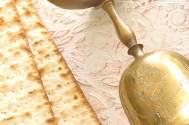

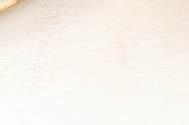




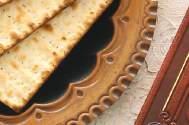
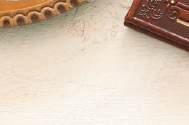

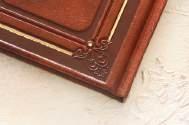
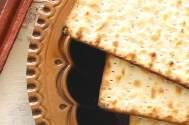
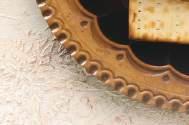
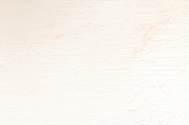


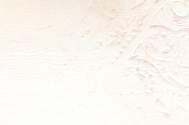
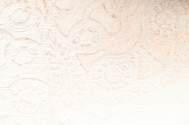

Chag Sameach from Amica On The Avenue and Amica Thornhill. Sending warm thoughts and blessings as you gather at the Seder to celebrate with those you love.







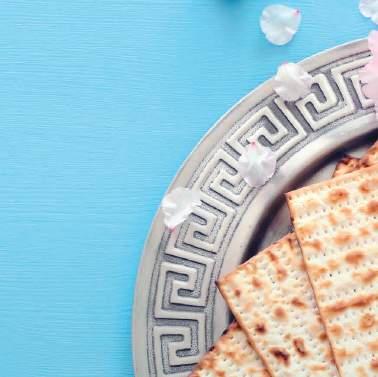


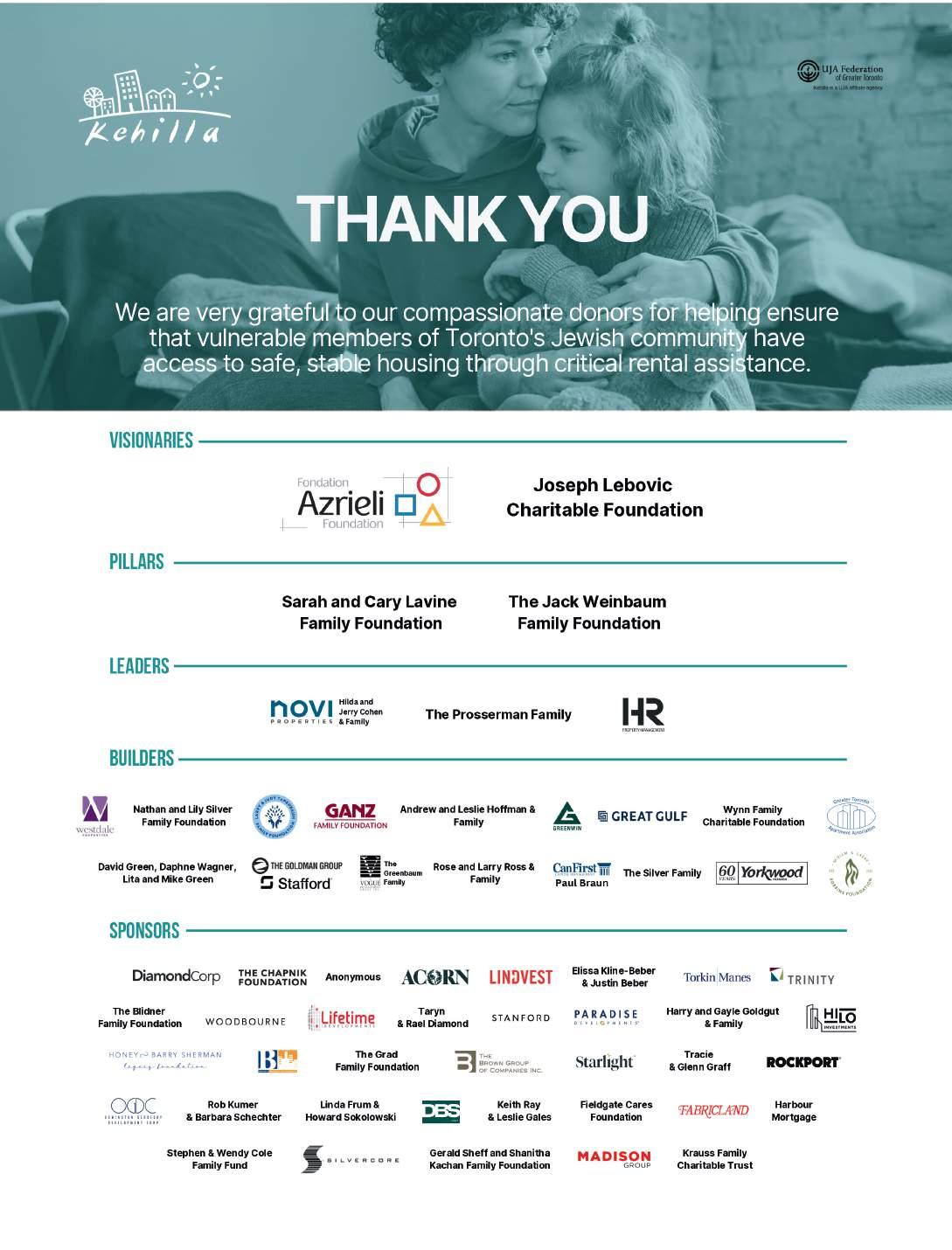


by PHILISSA CRAMER
BULLETINS FROM AROUND THE WORLD, BROUGHT TO YOU BY THE JEWISH TELEGRAPHIC AGENCY
THE LAST few years have brought a string of Jewish milestones for Andorra, a landlocked microstate in the Pyrenees where non-Catholic houses of worship are prohibited by law.
Last year, a Jewish lawmaker joined the legislature for the first time. Last summer, the lawmaker’s brother told the Jewish Telegraphic Agency that the local Jewish community was negotiating with the
government to secure land for a cemetery. Now, Andorra has gotten its first full-time rabbi.
The Chabad-Lubavitch Hasidic movement announced Kuty Kalmenson’s appointment in December at its annual conference for emissaries. Kalmenson and his family his wife Rochel and their five children had until recently been living in Ningbo, China, a city of more than 9 million south of Shanghai, but left because there were no longer Jews living or visiting there.
Their arrival to Andorra increased the number of Jews living in that country by perhaps 10 percent. Last summer, locals told JTA that the official Jewish community, which operates a cultural centre in an underground office building to sidestep the prohibition on synagogues, had 73 members.
Kalmenson, who is taking over leadership at the cultural centre, told Chabad.org that he believed the actual number of Jews living in Andorra to be substantially higher perhaps 250 among a total population of around 80,000.
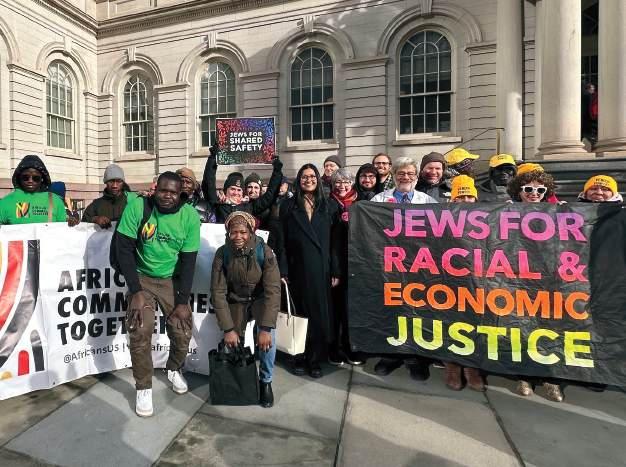
In addition to helping locals obtain kosher food, receive Jewish education, and fulfill other commandments under Jewish law, Kalmenson’s duties include serving Jewish travelers to the principality. Last year, roughly 10 million people visited Andorra, drawn by its luxury duty-free shopping and ski resorts. “We hope to bring everyone together,” Kalmenson said, “the veteran community members and those who’ve never been involved in Jewish life before.” JTA POLITICS
by ANDREW LAPIN
Jews For Racial and Economic Justice rallies with coalition partners at New York’s City Hall to demand New York remain a “sanctuary city” in the face of an immigration crackdown.
THE MOOD WAS bittersweet recently when Rabbi Dan Kaiman headed to the local airport to welcome an Afghan refugee about to be reunited with her sister. The arrival would add to a string of happy reunions facilitated by his synagogue, Congregation B’nai Emunah in Tulsa, Oklahoma, but Kaiman also knew that the experience was likely to be the last of its kind, at least for years, as the Trump administration prepared to cut off refugee admissions. Two days later, the government indeed froze all refugee resettlement grants, which the synagogue relied on to fund its work. “It’s a gut-wrenching, impossible di-
rective that we’re all still trying to figure out,” Kaiman said after the order was announced.
Now, Kaiman and his community are regrouping to see how they can help immigrants and refugees at a time when the president has moved swiftly against them. Mark Hetfield, the president of HIAS, the Jewish immigration aid and advocacy organization, says the speed and callousness with which Trump carried out the refugee cuts have been shocking and placed new pressure on groups like his. “We are the ones who have to deliver the news to the families here that were waiting for their loved ones, who’ve
waited for sometimes decades in refugee camps, that their relatives won’t be coming.”
As Trump’s campaign vows come to life, Jewish immigrant-rights groups from the centre to the far left are dusting off their playbooks from eight years ago, when Trump first became president. But they are doing so in a changed climate, up against not only a more organized administration, but also communal reorientation spurred by the Israel-Hamas war and, some say, a general sense of liberal exhaustion. National public opinion has also turned against immigration: a Gallup poll from last June shows most Americans want fewer immigrants entering the country.
Advocates such as Jessica Schaffer, director of the Jewish Council on Urban Affairs, a Chicago Jewish organization focused on a range of issues including immigration, are confident that the Jewish connection to immigration rights remains strong. “We are a community that has experienced the immigration process,” she says. “We understand the mandate to welcome the stranger is an important one.” JCFS Chicago CEO Stacey Shor agrees, pointing to oft-cited Jewish values like tikun olam, or repairing the world, and welcoming the stranger.
In January, the Reform and Conservative movements signed onto an open letter pushing back against Trump’s immigration policies, including a directive permitting immigration officers to conduct raids in houses of worship. Some synagogues, like churches, sheltered undocu-
mented migrants during the first Trump years. A few rabbis have also become outspoken immigration advocates.
But the giant in the Jewish immigration-aid space, HIAS, is entering the second Trump administration in a diminished state owing to recent staff cuts, and Hetfield says the Israel-Hamas war has made it harder to galvanize Jewish support for immigration both because responding to the crisis has been demanding, and because it has accelerated political shifts within Jewish communities. “We need to make sure American Jews remember that if Trump were president when their parents or grandparents came here,” Hetfield says, “they wouldn’t be here, period.”
At the same time, the alliances between Jewish and Muslim groups that solidified in the wake of Trump’s “Muslim ban” in his first administration have frayed today because of the war. But there are signs that such coalitions can be renewed. At B’nai Emunah in Tulsa, Kaiman is heavily reliant on local Muslim groups in resettlement work. They all help each other, he says, in a relationship that has continued unabated since October 7. “A Syrian refugee who spent years in a Jordanian refugee camp, then moves to Tulsa, Oklahoma, and comes to a synagogue for their refugee resettlement, for their cultural orientation to what it means to be an American,” Kaiman says. “And you know how much of a problem they have with meeting me at the front door in a kippah? It’s zero.” JTA

by SHIRA LI BARTOV
THE FALL OF Syrian dictator Bashar al-Assad has opened up a sea of uncertainty about Syria’s future and about the treasures of its past, including the remnants of its Jewish history.
A 13-year civil war cost the country more than 600,000 lives and saw some 100,000 people “forcibly disappeared” into prisons. The war also wreaked havoc on Syria’s most important cultural sites, from ancient monuments, castles, and mosques to the vestiges of a rich Jewish culture. Well before the war, Syria’s historical synagogues and other Jewish sites languished in neglect after Jews left the country en masse during Israel’s establishment. Now, archaeologists are beginning to assess how much more was lost to bombardment and wartime looting.
Syria was home to well established Jewish communities for more than 2,000 years, dating back to the Roman period. Over the centuries, those communities came to include Sephardic Jews expelled from Spain and European Jewish merchants. But the rise of Arab nationalist movements, along with a set of anti-Jewish laws and violence surrounding the establishment of Israel, resulted in waves of Jewish emigration. About 100,000 Jews lived in Syria at the start of the twentieth century, dropping to 15,000 in 1947. By 1992, there were about 4,000 Jews in Aleppo and smaller numbers in Damascus and Qamishli. In 2022, an estimate of Syria’s Jews counted only four.
Many Jewish sites have had no caretakers for decades, says Emma Cunliffe, an archaeologist with the Cultural Property Protection and Peace team at Newcastle University. “In a conflict situation, that neglect intensifies,” says Cunliffe. “Those few people who remained to look after them were then unable to reach them. But then as the war progressed, the damage increased significantly.”
By 2020, nearly half of Syria’s Jewish sites were destroyed, according to a report from the Foundation for Jewish Heritage. The Jobar Synagogue in Damascus, one of few Jewish places of worship still visited by a handful of elderly Jews before the war, was mostly turned into rubble in 2014. A host of ancient Torah scrolls, tapestries, chandeliers and other artifacts from the synagogue went missing, with some resurfacing in
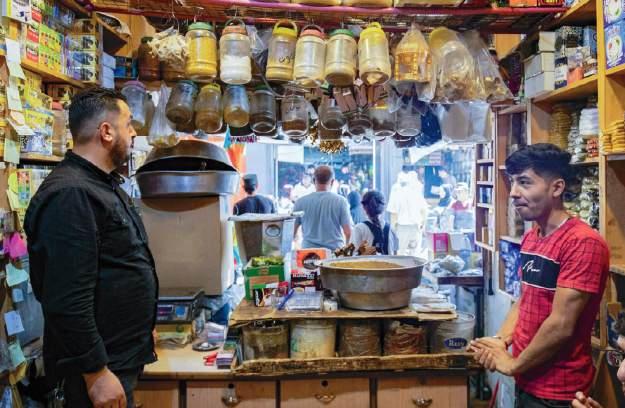
A shopkeeper helps a customer at the Azra Alyahoodi (Azra the Jew) market also known as the “Jewish market,” in the city of Qamishli in northeastern Syria.
Turkey. The al-Bandara Synagogue, one of the oldest synagogues in Aleppo, also suffered damage during fighting in the region. The synagogue had been renovated in the 1990s but was damaged again during the civil war in 2016. Cunliffe, who conducted a study of the site in 2017, says some parts of the building were destroyed and its courtyard was littered with debris.
Tadef, a town east of Aleppo, was once a popular destination for Jews because of its shrine to the Jewish scribe and prophet Ezra, who was said to stop there on his way to Jerusalem. But after a long period of neglect, the shrine was illegally excavated and looted both by rebel groups and Syrian government forces between 2021 and 2022, according to the rights group Syrians for Truth and Justice.
Scholars also worry about the ruins of Roman-era synagogues in ancient cities such as Apamea and Dura-Europos. Satellite imaging has shown that DuraEuropos was heavily looted while being held by Islamic State forces, according to Adam Blitz, a fellow of the Royal Anthropological Institute. Remnants from the synagogue of Dura-Europos are treasured by museums, including the Yale University Art Gallery, which displays 40 tiles from the synagogue’s ceiling. Blitz says other artifacts from the site are feared to have been
pilfered by combatants. “There has been tremendous fear about mosaics being looted.”
The extent of the damage to Jewish sites is still difficult to assess, according to Cunliffe, who says the skills and training needed for forensic damage collection remain limited in the war-torn country. Investigations through satellite imagery will also take several months. It may take much longer to establish protection for these sites, as Syria’s cultural sector had been overlooked during the war and the Syrian Antiquities Authority consigned a tiny budget.
As Syria hurtles into a new era, the fate of its heritage sites hangs in the balance. The country’s gems of Jewish history will only survive as far as its next regime allows, Cunliffe says.
The new regime has its roots in Islamic fundamentalist movements but in recent years has taken a pragmatic turn, leaving open questions about the fate of minorities and their interests under its governance. “Support for the people who are in a position to access them and protect them is critical, and also the need for an inclusive society that will allow that to happen,” Cunliffe says. “We don’t know what the future of Syria looks like. Certainly, there’s a lot of fighting, and which group ultimately wins will dictate a lot of what is possible.”
JTA





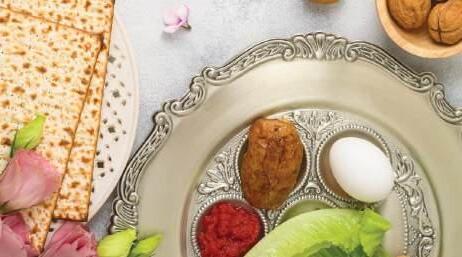














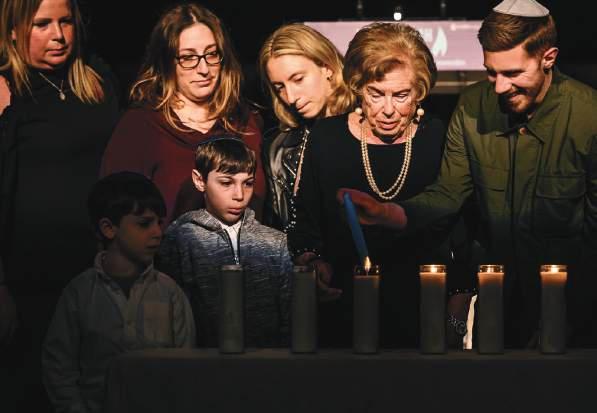
Psychologist Peggy Kleinplatz on the stereotypes and misconceptions that can distort discussions about sex
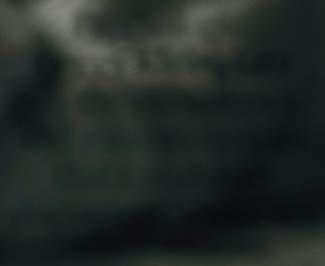
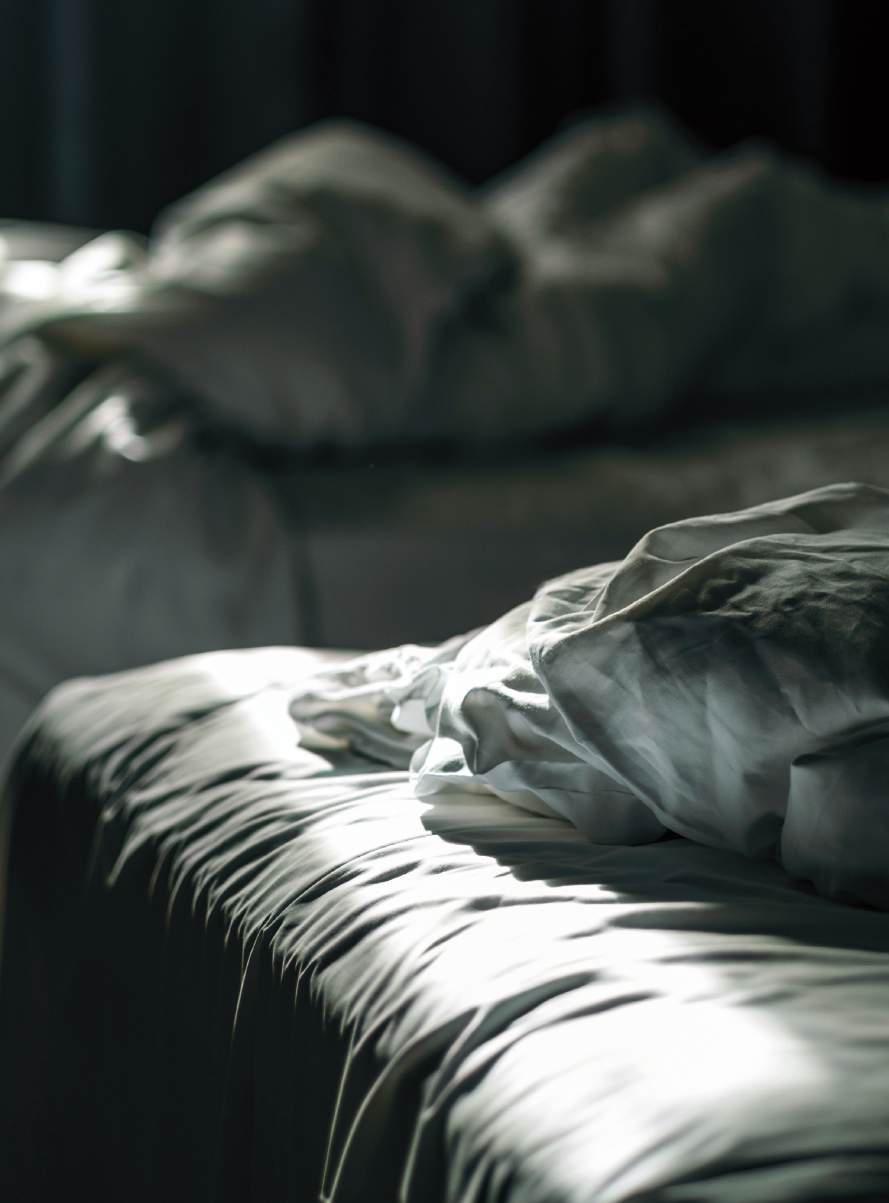
“JUDAISM HAS ALWAYS BEEN A VERY SEX-POSITIVE RELIGION.”
PEGGY KLEINPLATZ is a professor in the faculty of family medicine at the University of Ottawa. I first came across her work via a book she wrote (with A. Dana Ménard) called Magnificent Sex: Lessons from Extraordinary Lovers. I have since come to learn that she has written many other classics in the field of sex therapy and edited a standard textbook on the topic (New Directions in Sex Therapy: Innovations and Alternatives). She is the sex therapist’s sex therapist, appearing in books and podcasts from leading figures including Esther Perel and Emily Nagoski. She has also studied Holocaust survivors and infertility, positing a compelling theory that women were fed synthetic steroids in concentration camps, which permanently affected their reproductive health. • I had a wide-reaching discussion with her that was both entertaining and informative, touching on many aspects of Jewish life and sexuality.
As a rabbi who officiates weddings, I get a lot of questions about sexuality from a Jewish perspective. What are some of the benefits and challenges of talking about sexuality within a religious culture?
My impression is that all the religious traditions have a sex-positive and a sex-negative stream. In my teaching, I have the choice of focusing on the positive and the negative.
There are a lot of people, including some who consider themselves fairly learned about Judaism, who were not taught much about authentic, traditional aspects of sexuality within Judaism. The tradition, going all the way back to Abraham and Sarah, is fairly small-l liberal. Judaism has always been a very sex-positive religion.
I have sources that I often share with couples about Jewish sex ethics. One
of the things I like to point out is that there are trends in Jewish sex ethics that closely mirror what is going on in general society. When you are in a sexually permissive world, Judaism tends to go in that direction.
I would say you’ve just captured really accurately one side of the coin that comes from within Jewish traditions, and where they’re situated at a given point in time and history. The problem is that Jews have always been a small minority in wherever they’ve lived for the last couple of thousand years.
The other influences on sexuality have been non-Jews’ attitudes towards Jews and, in particular, antisemitism. So if we look at the 1900s and the period up to, we’ll say 1938 in Poland, the belief was that Jewish women were “nymphomaniacs” and Jewish men were not to be trusted
around Christian women in a way that very much parallels attitudes towards Black men in the antebellum South.
We see the switch in 1960s American culture, when the “sexual revolution” occurred. We see antisemitism shifting to say that Jewish women were all “frigid” and Jewish men were unappealing, inexperienced, neurotic. There’s this huge shift between the 1930s and the 1960s in the context of the antisemitism that used sexuality as a pivot point, creating whatever stereotypes about Jews’ sexuality would most resonate with the dominant culture and succeed in othering Jews and keeping Jews marginalized.
I keep coming back to niddah (the halakhic status of a woman during menstruation). My thinking about this is that, historically, between nursing and pregnancy and malnourishment, women likely menstruated maybe once a year. Being separate from your husband for 12 days out of every 28 would have been very unlikely. Yet here we are in, the twentieth century, people are healthy, pregnancy rates are down, and as a result, women that keep niddah menstruate regularly. There are dozens, hundreds of examples of rabbis and rebbetzins and educators talking about how niddah and the mikveh are the best things that could ever happen to a couple, because they create a honeymoon every month: that pause in sexual relations keeps the marriage fresh. I think it’s really an anachronism. I have a hard time teaching about this because I don’t like ascribing emotional or psychological benefits to things that we’re required to do because of the law things change over time, and maybe the psychological effects are different now than they once were. But is there research

“There are a lot of people, including some who consider themselves fairly learned about Judaism, who were not taught much about authentic, traditional aspects of sexuality within Judaism.”
that shows periods of abstinence can be beneficial?
Isn’t it interesting what we choose to teach, and what gets left out of our teachings?
Whether it’s in secular, feminist contexts (such as when I’m at a university) or when I’m speaking to a Jewish audience, I find it remarkable that everyone has heard about what they interpret as sex-negative practices, such
as niddah, but they have somehow managed not to have learned about onah [the Biblical obligation to sexually satisfy one’s wife] which is, as far as I can tell, unique to Judaism.
When I cover the history of sexuality in Western civilization, students are always very surprised at the notion that sexuality is a husband’s privilege; the idea that it is a wife’s obligation really comes out of Christian
teachings. Jewish teachings have always been quite the opposite: sexuality, and in particular sexual pleasure, is a wife’s privilege and a husband’s responsibility.
When I am asked to speak to groups of young, married, religiously observant women in my capacity as a sex therapist whose research has focused, among other things, on optimal sexual experiences, I’m often asked: Do you believe that niddah is a blessing for marriage? in the same way that Masters and Johnson were able to demonstrate through their research in 1966 and 1970 that focusing on intercourse can sap the erotic energy from a relationship. My answer is that I have no right to answer this question. In Judaism there are some laws that are to be followed because of their inherent value for communal life or interpersonal relationships things such as thou shalt not bear false witness or thou shalt not commit murder. And there are other categories of laws that are not intended to be explained or followed for rational purposes, but rather as articles of faith.
I never answer the question about whether or not there is some marital benefit to following chukim [Biblical laws which are traditionally understood to have a meaning beyond human comprehension]. I do not have the right to answer that question. One is scientific and the other is a matter of religious observance. Either you do it or you don’t do it because it enriches your life as a practitioner of your religion. A chok is not supposed to be subject to justification.
There is a crossover every once in a while. If I think of the people I interviewed for my research on optimal sexual experiences, every once in a while, I’d be speaking to someone who would say, Thank G-d for Shabbos. This is how we make the angels
sing. This is a time of uninterrupted union that is incredibly erotic and that we anticipate and savor as we look forward to time outside of time to do nothing but be with each other and bring the full kavanah to it. That’s not the purpose of observing Shabbat. But if that happens to work out, isn’t that wonderful?
What are some of the differences between how people talk about sex within contemporary culture versus how they experience it in private?
So in terms of contemporary culture in general, it’s the fact that there’s such a discrepancy between the ostensible openness about sexuality in the public domain and the inability to talk about sexuality openly in the private domain that keeps me in business. In the 1950s, when public discussion about sexuality was more taboo, if people had sexual problems they figured everybody else did too. They didn’t like it, but they probably didn’t think it was the end of the world, and they were going to somehow grit their teeth and make their way through it. In 2024, everybody assumes, based on the discourse in the public domain, that everybody else is having great sex except for them. They feel, Oh no, I’m not keeping up with the Joneses, I’m not having enough sex, I’m not having sex with the same frequency as everybody else, my sex doesn’t always seem easy and effortless, it doesn’t always end in orgasm. They walk into my office filled with shame and feeling defective. The first thing I need to do is deal with their sense of alienation from what they perceive as everyone else’s wonderful sex life.
I have documented that really wonderful sex will require effort. It shouldn’t feel like work if you’re doing it right, but it does require a measure of de-
“Jewish teachings have always held that sexuality, and in particular sexual pleasure, is a wife’s privilege and a husband’s responsibility.”
potentials and become the lovers that they only glimmered that they might be earlier on was generally somewhere in their 50s. That was true for the older, partnered people and for the kinky, consensually non-monogamous LGBTQIA+ people, etc. They all needed to have had a measure of devotion in order to fulfill their potentials as lovers. And that meant that they learned from each experience. I remember one participant saying that even the bad experiences are worth learning from.
What are some lessons that the Jewish community can learn from other faith traditions that are surprising? Is there something that Anglicans or Muslims can teach Jews about great sex?
votion, of intentionality, like anything else that’s worth experiencing in life.
I think the word that summarizes all of this from a Jewish perspective and was used occasionally by some of our participants who happened to be religiously observant Jews was kavanah [intention to perform a mitzvah]. It’s about the way we transform something that could be mundane into something that could be transcendent.
In my research, one of the questions we sought to answer is: How does one become an extraordinary lover? We literally asked: Were you born this way? Were you born under a lucky star? How did this happen? All of the people we interviewed, regardless of background, cracked up laughing at the question because it wasn’t something that happened naturally, it wasn’t something that happened spontaneously. It was something that took years of intentionality and effort; the average age at which people started to fulfill their erotic
No. In 2013, my research team at the University of Ottawa wrote an article saying that optimal sexual experiences are virtually identical, regardless of the demographic background of the participants. We all glow in the dark identically. There’s an assumption that men and women are fundamentally different sexually, or that old people or young people are fundamentally different sexually, or that people who are kinky versus people who are vanilla are fundamentally different sexually, or that people who are LGBTQIA+ are fundamentally different from people who are heterosexual. Our research has found quite the opposite.
What our research has discovered is that, regardless of the stereotypes, the fundamental character of wonderful, memorable what we call “optimal sexual experiences” — are indistinguishable regardless of the background of the participant.
This interview was edited for length and clarity.
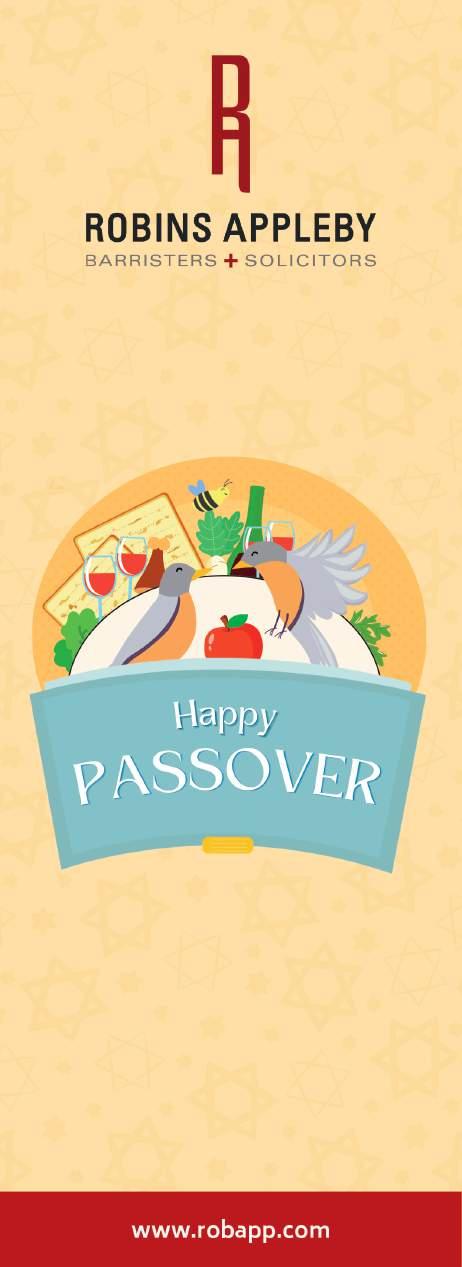
Junior Elementary – Grade 1 & 2 (Sept 2025), Grade 3 (Sept 2026).



✔ Programs from Toddler (18 months) to Grade 2 – Expanding to Grade 3
✔ Advanced Curriculum – Exceeding Ontario standards
✔ Jewish Traditions & Culture – Integrated into daily learning
✔ Small Class Sizes – Personalized learning
✔ Top Faculty – RECEs & Ontario Certified Teachers
✔ Innovative Environments – Safe, engaging spaces
✔ Year-Round Programming & Summer Camp – Learning, creativity & fun
Just like Hillel’s student, we all have complex questions that we want answered as simply as possible. Here, we consider a question of contemporary relevance and consider how sources, both classical and modern, address it. by AVI FINEGOLD
JEWS have always had interactions with governing bodies. Consider the shtadlan — a term that refers to a Jewish leader who lobbied on behalf of the community to the local government. The shtadlan as a mainstay of Jewish communities rose to prominence in Europe in the seventeenth century, but the name and concept go back via Christian and Muslim Spain all the way to tenth century Baghdad, and just about anywhere else the Jews governed themselves but still had to interact with whatever civic authorities were in charge.
Historically, this lobbying tended to be exclusively regarding affairs that mattered to the Jewish community specifically — which generally meant trying to avoid blood libels or inquisitions — but was not a mechanism for trying to influence policies more broadly. By the twentieth
To be pushed back and limited upon the path of life is … not an essential condition of the Galuth, Israel’s exile state among the nations, but, on the contrary, it is our duty to join ourselves as closely as possible to the state which receives us into its midst, to promote its welfare and not to consider our well-being as in any way separate from that of the state to which we belong. 1
A fundamental principle of Judaism is hakaras hatov — recognizing benefits afforded us and giving expression to our appreciation. Therefore, it is incumbent upon each Jewish citizen to participate in the democratic system which guards the freedoms we enjoy. The most fundamental responsibility of each individual is to register and to vote.
Therefore, I urge all members of the Jewish community to fulfill their obligations by registering as soon as possible, and by voting. By this, we can express our appreciation and contribute to the continued security of our community. 2
The king by justice establisheth the land, but the man who sets himself apart overthroweth it (Proverbs 29:4). The Torah’s king rules through justice and thereby causes the earth to endure, but the man who sets himself apart overthrows it. This implies that if a man acts as though he were separate by secluding himself in the corner of his home and declaring: “What concern are the problems of the community to me? What does their judgment mean to me? Why should I listen to them? I will do well (without them),” he helps to destroy the world. 3
century, Jews had attained a great level of confidence and security in diaspora society, and Jewish groups were advocating for Jewish values in larger society. This began with liberal communities and social welfare/ tikun olam advocacy; the Religious Action Center of Reform Judaism was founded in 1959. Eventually, Orthodox groups developed the confidence to follow suit (the Orthodox Union founded their Institute for Public Affairs in the 1980s)
— especially if they feel that the existing voices on a topic are misrepresenting what they feel Judaism actually says. Canadians will be heading to the polls to vote in a federal election sometime this year. Should we be presenting and advocating for our values in public? Are there benefits? Limitations? Should we be taking our Judaism into account when considering issues such as abortion or immigration?
1 HERE WE SEE HIRSCH, a leading rabbi of nineteenth century Germany, making a strong defence of modernism — in stark contrast to much of the isolationism that the burgeoning Hassidic movement was bringing to Judaism at the time.
2
PERHAPS THE MOST FAMOUS Jewish legal authority of the twentieth century, it’s notable that Feinstein isn’t advocating for bringing your Jewish values into the polling booth here. You could either interpret this as being because it was obvious to him that you should do so, or as evidence that Jewish values aren’t relevant when you decide how to vote. Here as always, the text becomes a mirror for your own ideas.
3 A LATER MIDRASHIC COLLECTION, this was clearly written in a context where Jews were governing themselves. It is nevertheless instructive here for its bias towards action, and participating in social issues. One might imagine that the author would be inclined to extend this exhortation to argue for justice in the general social sphere as well as the Jewish one.
ONE THING that’s clear to me from the last year is that my love for the Jewish people has reshaped my social justice activism in that as much as I may care about racial justice or immigrant rights or climate change or reproductive rights, I won’t work with groups that are anti-Israel or who are antisemitic. I kind of think of it as: halakhah doesn’t tell me what to do on this, but it does give some red lines, some broader parameters. Within those red lines, what’s going to guide me then is a sense of what’s reasonable, and a general sense of empathy. I find it to be problematic for one’s Judaism to be in any way perfectly overlapping with partisan politics. I think that, from Jewish sources, we have a thrust in a certain direction [on many issues]. How that gets concretized is where it gets subjective.
The Talmud introduces a story about a man, Bar Kamtza, who out of desire for revenge against another man, went to the Roman authorities and told them that the Jews were rebelling. He advised the emperor to send a calf as an offering and see if the Jews would sacrifice it. En route to the rabbis with the animal, Bar Kamtza deliberately blemished the calf, thereby invalidating it for sacrifice at the temple.
The Sages thought to sacrifice the animal as an offering regardless of the blemish, due to the imperative to maintain peace with the government. Rabbi Zekharya ben Avkolas said to them: If the priests do that, people will say that blemished animals may be sacrificed as offerings on the altar. The Sages said: If we do not sacrifice it, then we must prevent Bar Kamtza from reporting this to the emperor. The Sages thought to kill him so that he would not go and speak against them. Rabbi Zekharya said to them: If you kill him, people will say that one who makes a blemish on sacrificial animals is to be killed. As a result, they did nothing, Bar Kamtza’s slander was accepted by the authorities, and consequently the war between the Jews and the Romans began.
Rabbi Yohanan says: The excessive humility of Rabbi Zekharya ben Avkolas destroyed our Temple, burned our Sanctuary, and exiled us from our land. 4
Even though homosexual conduct violates Jewish law and morality, the question of the Jewish position on homosexual rights laws should be based on a balance between Judaism’s mandate to make the world a better place and the realpolitik needs to avoid endangering Jews’ well-being in America and to foster our own growth and success here. Applying this balance to the case of homosexual rights in America leads this author to conclude that it is in the best
interests of Judaism to support the continued granting of basic civil rights to all, while making clear our moral opposition to the underlying conduct of those who exercise their freedom in violation of basic ethical norms of Judaism. We are providing no moral legitimization for an activity if we seek to prohibit firing a person from his or her job because of it. Orthodox Judaism should seek to prohibit people from being fired from their jobs or evicted from their homes for reasons unrelated to their suitability for the job or the place of residence. This rule is in our own best interest, whereas a rule which allows economic discrimination based on society’s perception of a person’s private morality or religiosity is not. 5
Tikkun olam (social activism, or literally “world repair”) is an attempt to repair breaches of justice in our world. Tikkun olam is a central wellspring of spirituality and meaning for many contemporary Jews. The Reconstructionist movement has helped define the vanguard of social justice in the Jewish community, advancing causes from equality for women and LGBTQIA folks, to policy-shifting advocacy work in multi-racial, interfaith coalitions. The centrality of working for social justice was part of Rabbi Mordecai Kaplan’s earliest vision for Reconstructionism. Tikkun olam continues to be a central pillar for our work to build a more just, equitable, diverse, and inclusive world and in our approach to Jewish life:
“The Jewish protagonists of social idealism should realize that the Jewish religion came into being as a result of the first attempt to conceive of God as the defender of the weak against the strong and that it can therefore continue to serve as the inspiration in the present struggle.” 6
Rabba Rori Picker Neiss
SENIOR VICE PRESIDENT FOR COMMUNITY RELATIONS, JEWISH COUNCIL FOR PUBLIC AFFAIRS
WE COME at issues as the sum total of all of our being and experiences. I’ll get asked about an issue as a woman or as an Orthodox Jew or as a mother, and it’s hard to isolate where are our Jewish values compared to our American values, compared to our moral values that we may or may not think of as connected to our Jewish values.
I am seeing the Jewish community wrestling with the ways in which
we feel this need to prioritize a safety and security of the Jewish community. Do we think that we need to prioritize fighting antisemitism? Do we need to prioritize a relationship with Israel? Are these issues that we think ultimately make the Jewish community most safe? Or do we recognize the ways in which civil liberties and minority rights ultimately are what keeps the Jewish community most safe?
4 IN OTHER WORDS, as a result of Rabbi Zekharya’s decision to not go to the authorities and explain the Jewish laws vis-à-vis temple sacrifices, the Romans’ offering was refused and they took offence. This resulted in the war that destroyed the temple and sent the Jews into exile.
The rabbis were keenly aware, even when living in a semi-autonomous state, that the community needed to not only maintain their laws and values, but to advocate for these laws to the authorities. The message is clear: sticking to your own community and not speaking truth to power can cause a community’s downfall.
5 BROYDE, A SCHOLAR OF LAW AND RELIGION (it must be noted that he was at the centre of a scandal when he gained access to private message boards using a pseudonym in order to promote his own work), wrote this in response to an article about the Jewish communal attitude to the gay-rights movement. His argument echoes the shtadlanim of the past whose primary responsibility was the protection of Jewish communal interests.
6 HERE, THE VERY FACT that people feel compelled to do good in the world is understood to be, in and of itself, a Jewish value. The term tikun olam and the idea it represents has a very complicated history. For many Jews it has become the very essence of Judaism, while for others it barely even registers.
I think that’s the tension that we’re sitting with.
I have a hard time with [this increased focus on prioritizing communal safety] because I think it’s actually really dangerous for the Jewish community. I think that the Jewish community shifting in this direction is not ultimately going to be good for the Jews, in part because the Jewish community is never going to be influential enough or have enough of a presence in either the American or the Canadian context for our values to be what takes hold. So the only way that narrative actually moves forward is by tying this idea of Jewish values to other values that are more represented in the majority.
TO RETURN to the idea of the shtadlan, the fundamental shift in modernity was, perhaps, not whether one should advocate for Judaism beyond the narrow scope of particular Jewish interests. Rather, it concerns our ability to vote and advocate for what we think is best, often individually, independent of an overarching Jewish communal response. This ability to be your own shtadlan should be taken to heart. Should you consider your Jewish values when you go to the ballot box? Absolutely — but what that looks like is going to be different for each of us. For some, it will be limited and relate to issues that directly affect Jews, such as antisemitism or a given candidate’s voting record regarding Israel. For others, it will have a broader scope, encompassing social issues that their understanding of Judaism speaks to (however they interpret the sources and whatever they think Judaism has to say about them). All of these have precedent, and all fall within Jewish understandings of civic engagement.

Thank you for supporting The CJN!
With the generous support of our donors, The CJN can continue to provide quality, independent, and objective Jewish journalism, at no cost to our community.
Aaron Milrad • Abe & Bella Rolnick • Abe & Brenda Borzykowski • Adam Cutler • Aden Seaton • Agnes Herczeg • Agnes Klein • Alan Goodman • Alan Kaplan • Alan Nusbaum • Alayne Tresch • Albert Calman • Alexander Khemlin • Alexis Rothschild • Alice Knafo • Alisa Siegel • Alisa Streat • Allan Gelkopf • Allen Green • Andrew Fainer • Andrew Szende • Anita Tami Kligman • Ann Shendroff • Anne Huss • Anne Mccleave • Anne Mitchell • Annette Robicsek • Arlyn Levy • Arthur Rabinovitch • Asher Tannenbaum • Atarah
Derrick • Aube Kurtz • Audrey Lampert • Audrey Wineberg • Ava
Brodsky • Ava Ross • Avi Gottlieb • Bailey Levenson • Bambi Katz • Barb Orenstein • Barbara Vininsky-Millar • Barry Rubinoff • Barry Shecter • Benjamin Shinewald • Berel Rodal • Bernard Pollock • Betty Sherwood • Blossom Shaffer • Bonnie And Greenberg • Bonnie Birken • Bradley Wiener • Brenda Osler • Brian + Violette Greenspan • Brian Ettkin • Brian Herman • Brian Kasner • Brian Ludmer • Bruce Wither • Bryan Borzykowski • Carl Zeliger • Carol Kavanaugh • Carol Seidman • Carole And Arnold Machtinger • Carole Cantor • Carole Gruson • Caroline Cohen • Carolyn Kolers • Carolyn Rosen • Cathy Moser • Celina Dunn • Charles Yolleck • Charlie Diamond • Charlotte Haber • Charon
Goldman • Cheryl Charney • Cheryl Gewurtz • Cheryl Zeldin • Cindy Breslin-Carere • Cindy Richter • Cindy Seligman • Cindy Shore • Clara Rudnitsky • Clifford Goldfarb • Corinne Rusch-Drutz
• Dan Moskovitz • Dana Zinman • Daniel Safran • David Balaban • David Birnbaum • David Freudenstein • David Glicksman • David
Louis • David Martz • David Matlow • David Saltz • David Schnarch
• David Sherman • David Sklar • David Smith • David Zackon • Dawn Rosen • Debby Shapero Propp • Deborah & David Cooper • Deborah Orzy • Debra Hanff • Del Atwood • Diane Fazekas • Doreen Cort • Dorothy Aaron • Dr Brian Silver • Dr. Allan Weinstein
• Dr. Harvey Golombek • Dr. Isaac Katz • E & A Hollinger • Earl
Miller • Edward Yudin • Eileen Jadd • Eileen Kruger • Elaine Goldbach • Elaine Mintz • Elaine Singer • Elayne Freeman • Eleanor Baker • Eleanor Wisenberg • Elizabeth Wolfe • Ella Burakowski • Ellen Morrow • Ellen Sue Mesbur • Elliott Peranson
• Elly Bollegraaf • Eric Bornstein • Eric Shostak • Erika Krausz • Ernest Strolovitch • Esther Bergman • Esther Chetner • Esther Helfenbaum • Eva Danon • Eva Marx • Evelyn Lieff • Evelyn Tauben • Faith Weinberg • Fern Teplitsky • Ferne Sherkin-Langer • Florence Clapham • Florence Fried • Frances Avni • Frances Giddens • Francine Peters • Frank And Sue Hechter • Franklyn Julien • Fredelle And Harold Brief • G. Finkelborough • Gabor Lantos • Gabriel Novack • Gabriella Goliger • Gail Kaufman • Gale Rubenstein • Garfield Emerson • Gary Dvorkin • Gary Kapelus • Gary Karlin • Gary Shiff • Gary Waters • Gerald Dunkelman • Gerald Wexler • Gerry Goldman • Gerry Pernica • Gerry Richler • Gershon Growe • Gil Levy • Gladys Isenberg • Glenda Marlene Ruch • Gloria Gilbert • Gloria Gold • Gordon Kugler • Gordon Starkman • Halley Girvitz • Hannah Frankel • Harriet Spector • Harriet Wichin • Harriet Wolman • Harry Bolner • Harry Figov • Harry Rajchgot • Harry Wolle • Hartley Garshowitz • Harvey Kestenberg • Harvey Schwartz • Harvey Wright • Heather Ringel • Helen Adam • Helen Kenedy • Helene Kerr • Hena Kon • Henry Ruschin • Hess Associates • Hillary Steinhart • Hillel Rosen • Hope Springman • Howard & Marlene Slepkov • Howard Hirshhorn
• Howard Levine • Howard Margolese • Howard Simmons • Howard Sterling • Howard Stevens • Howard Zweig • Hymie Mida
• Ian Sherman • Irene Szylinger • Irv Teper • Irving Salit • Isaac
Thau • Israel Mida • Jack Borenstein • Jack Copelovici • Jack Steiner • Jan Simonsky • Jane Litwack • Janice Landy • Jay
Feldman • Jay Niederhoffer • Jeff Itcush • Jeffrey Cole • Jeffrey Teitelbaum • Jels Sales Promotion Co. • Jerrold Lerman • Jerry Greenglass • Jerry Zell • Joan Zafran • Joanne B. Levy • Joanne Schwebel • Joel Jeffries • Joel Snitman • John Bohnen • John Colomby • John Diener • John Friedlan • John Glicksman • John Rose • John Singer • Jonathan Strauss • Joseph Turkel • Josephine Garrity • Josh Beutel • Joy E Kaufman • Joyce Wayne • Joyce Zweig • Judi Cartman • Judi Shostack • Judith Chetner • Judy Diestel • Judy Fleisher • Judy Menceles • Judy Steiner • Jules Lewy • Jules Samson • Julia Reitman • K. David Brody • Kailah Rubin • Karen Gilberg • Karen Lior • Karen Mandell • Karen Minden • Karen Truster • Kathleen Pasoff • Kathryn Kates • Kelly Green • Kenneth Eisen • Kenneth Grad • L Levy • Larry Freedman • Larry Joffe • Larry Levine • Larry Smith • Laura Crangle • Lauren Shaps • Lawrence Lander • Lawrence M Weinberg Professional Corporation • Lawrence Miller • Lawrence Wallach • Leah Miller • Leonard Banks • Les Rothschild • Leslie Nevsky • Linda Bernofsky • Linda Friedman • Linda Gordner • Linda Litwack • Linda Matlow • Linda Muallim • Linda Wise • Lionel Berger • Lita Zukerman • Lori Katz • Lorne Switzer • Lorraine And David Bloom • Lorraine Glassman • Lorraine Goldberg • Lottie Glass • Lou Milrad • Lowell Pancer • Lynda Fried • Lynn Cutler • Lynne Mitchell • Lynne Warner • Marc Cittone • Marc Wilchesky • Marcia Gilbert • Marcia Glick • Marcus Scoler • Marianne Keystone • Marilyn Finkelstein • Marilyn Miller • Marilyn Segall • Marilyn Sinclair • Marilynne Glick • Marina Strauss • Mark Bernick • Mark Dorfman • Mark Freiman • Mark Goodman • Mark Grobman • Mark Shiner • Mark Wise • Marlene Charney • Marsha & Jerry Goldberg • Marsha Kaiserman • Marsha Permut • Martin Day • Martin Zarnett • Marvin Wexler • Mary Ellen Herman • Mary Fruitman • Matthew Ritter • Maureen Price • Maxine Gallander Wintre • Melanie Gluss • Meriel Gordon • Merle Rachlin • Merle Wolofsky • Michael Engelberg • Michael Flatt • Michael Gertler • Michael Gladstone • Michael Goldbloom • Michael Halickman • Michael Inzlicht • Michael Millman • Michael Rosen • Michael Stroh • Michal Pomotov • Michelle Shulman • Michelle Singer • Micky Fraterman • Mike Florence • Mindi Cofman • Miriam Freilich Landau • Molly Hellen • Mona Golfman • Mona Paul • Mona Strasberg • Mona Taylor • Monda Halpern • Monica Ejdelman • Monica Shapiro • Morty Yalovsky • Myer Bick • Myra Merkur • Myrna Lass • Myrna Waiser • Myron Matlow • Nanci Turk • Nathan Berger • Neal Stein • Neil Cutler • Neil Tudiver • Noam Millo • Nomi Goodman • Norma Joseph • Norman Ronski • Norman Zuckerman • Olga Luftig • Patricia Wolfson • Paul Sterescu • Paula & Manny Agulnik • Paula Garshowitz • Paula Perlmutar-Oretsky • Paula Rembach • Pearl Grundland • Pearl Rosen • Perry Davis • Peter Dan • Peter Graben • Phil Weinstein • Philip Berger • Philip Sherman • Philip Stilman • Phyllis Cincinatus • Phyllis Frieberg • R Balaban • Rabbi Baruch & Joset Frydman-Kohl • Rachel & Jay Rolnick • Raphael Rush Medicine Professional Corporation • Raziel Zisman • Reene Katz • Rena Popielnik Baskin • Rhoda Singer • Rhona Vandelman • Rhonda Wilansky • Richard & Linda Ansell • Richard And Gail Cooper • Richard Levy • Ricky Goldenberg • Rob Krakauer • Robert Berger • Robert Brym • Robert Goldberg • Robert Harlang • Robert Issenman • Robert Kepes • Robert Levy • Roberta Lawee • Rochelle Zubcov • Rodney Bergman • Ron Burkes • Ronald Mandel • Ronald Pushchak • Ronna Hoffer • Rosalie Markus • Rosalyn Train • Rosie Parnass • Roslyn Keri • Ruth Gilbert • Ruth Kahane • Ruth Swartzman • S. Argintaru • Sam Chaim • Sam Zeifman • Samuel Broverman • Samuel Grzesh • Samuel Lepek • Sandra Goren • Sandra Kaminker • Sara Krengel • Sarah Mccabe • Sarah Silverberg • Sean Pasternak • Seyglor Consultants Inc • Seymour Baltman • Sharon Cherniak • Sharon Chodirker • Sharon Dagan • Sharon Klug • Sharon Moncarz • Sharon Singer • Shayla Gunter-Goldstein • Sheldon Elman • Sheldon Lerman • Shelley Veinish • Sherry Firestone • Sherry Smugler • Sherryn Lang • Sherwin Lyman • Sheryl Erenberg • Shulamith (Shami) Zimmerman • Sidney Aster • Sidney Nusinowitz • Simon Bramson • Solly Feldman • Sorrell Gwartzman • Stan Marchamd • Stanley Gordon • Stanley Rabovsky • Stephen Benjamin • Stephen Cooper • Stephen Halperin • Stephen Kaplan • Stephen Kornblum • Stephen Shalinsky • Steve Aiken • Steven Goldberg • Steven Mlotek • Stuart Himmel • Sue Winestock • Sueann Singer • Sup Mei Graub • Susan Duviner • Susan Ginsberg • Susan Goldrich • Susan Goldstein • Susan Wolfe • Sylvia Greenspoon • Sylvia Wineberg • Ted Axler • Ted Greenfield • Tilis Insurance & Financial Services Inc. • Toby H Rose • Victor Peters • Wendy Switzer Myles • William Bernstein • William Rosenfeld • Yaakov Smolack • Yvonne Steinert • Zoe Klein
Allen & Celia Hirsh Family Fund at the Jewish Foundation of Greater Toronto • Bonnie & Ernie Singer Family Fund at the Jewish Foundation of Greater Toronto • Carole Herman Zucker Family Fund at the Jewish Foundation of Greater Toronto • Chani & Bram Bregman Fund / Mr. Bram David Bregman • Chimp Charitable Impact Foundations / Gary & Debra • First Narayever Congregation • Miriam Aaron Roland Charitable Fund • Orbach Family Foundation at the Jewish Foundation of Greater Toronto • Phyllis & Ab Flatt Family Endowment Fund at the Jewish Foundation of Greater Toronto • Sonny Merovitz Foundation • Stendel Family Foundation at Toronto Foundation • The Alexander E. Grossman Foundation • The Arthur and Shelley Gans Foundation • The George S. and Dorothy Grostern Foundation • The Jewish Community Foundation of Montreal / Simon Rossdeutscher Family Foundation • The Morris & Rosalind Goodman Family Foundation • The Sharp Foundation • 141895 Canada Inc.
Thank you to our lead donors
Elizabeth Wolfe
The Ira Gluskin and Maxine Granovsky Gluskin Charitable Foundation
The Azrieli Foundation
The Schulich Foundation
The Sharp Foundation
Wendy R. Eisen Endowment Fund at the Jewish Foundation of Greater Toronto

BY ROBERT BRYM
ILLUSTRATIONS BY MARÍA HERGUETA
EPICURUS was a third century BCE Greek religious skeptic. He taught that the good life is characterized by happiness, tranquility, and freedom from suffering, most of which is caused by the irrational fear of divine retribution and punishment after death. Taking a dim view of the Hellenization of some of their coreligionists, devout Jews of the era developed an eponymous term to refer to any Jew who deviated from strict religious observance: epikoros (Hebrew) or afker (Aramaic), later rendered as apikoyres in Yiddish.
The persistence of this denigrating term testifies to the fact that, for millennia, some Jews have widely regarded religious defection as a threat to Jewish continuity. That’s why a 1964 cover story in Look, a then-popular weekly magazine, caused such a furor. It was titled “The Vanishing American Jew.” Its author, Thomas B. Morgan, claimed there would be hardly any Jews left in the US by the year 2000, due largely to intermarriage. Look ceased publication in 1971. Morgan passed away in 2014. In contrast, American Jews now

number between 6.3 and 7.5 million according to the latest estimates by leading American and Israeli experts on the subject testament to the hazards of forecasting the future, especially perhaps when it comes to Jews.
Even today, much social scientific research on diaspora Jewry is motivated by the desire to assess the extent to which acculturation involving a departure from religious observance and normative nonreligious Jewish behaviour weakens the foundations of Jewish communal life. Some researchers view acculturation as a force that undermines the continuity of Jewish communities. Others view acculturation as an adaptive mechanism that permits Jewish communities to survive and flourish in modern environments.
What do Canadian data show? If we examine census figures, we can see that both forces are at play, but, on the whole, the trend favours continuity: secularization may preserve rather than threaten that continuity. Acculturation can cause Jewish communities to dissipate, but it can also help to ensure their continuity. In fact, both processes often operate simultaneously. The difficulty is in figuring out which force predominates in a given time and place.
THE CANADIAN CENSUS requires all residents to state their religion (if any) every decade, and their ethnicity, culture, or ancestry every five years.
Charles Shahar, chief researcher for Federation CJA in Montreal, has for decades been the foremost demographer of Canadian Jewry. He adopts what he calls the “standard” census definition of Canadian Jews. According to this standard, Jews are individuals who either specify their religion as Jewish or say they have no religion but include Jewish among their ethnic, cultural, or ancestral identifiers. By this definition, even individuals with no religion who list Jewish as their fourth, fifth, or sixth ethnic, cultural, or ancestral identifier are counted as Jews. People who identify as Jewish by ethnicity, culture, or ancestry but identify with a non-Jewish religion are not considered Jewish by this definition.
Sergio DellaPergola, former chair of the Avraham Harman Institute of Contemporary Jewry at the Hebrew University of Jerusalem, is widely regarded as the dean of demographers of world Jewry. He uses a more restrictive definition than Shahar does. In addition to excluding individuals who identify with a non-Jewish religion yet identify as Jewish by ethnicity, culture, or ancestry, he does not count as Jews those Canadians who say they have no religion and list their Jewish ethnic, cultural, or ancestral origins fourth, fifth, or sixth. In DellaPergola’s view, the Jewish identity of such individuals is too weak to allow them to be counted as members of the community.
There is no right or wrong here. Note, however, that both Shahar’s and DellaPergola’s definitions exclude people who identify as Jewish to some degree, and there is a cost to doing so.
For example, neither definition is entirely sensible when applied to immigrants from the former Soviet Union (FSU), who comprise the largest category of Canadian Jewish immigrants and, with their Russian-speaking offspring, as much as 12 percent of Canada’s Jewish population by the standard definition. Some of these individuals identify as Christian by religion yet identify as Jewish by “nationality” (natsional’nost’ in Russian).
Natsional’nost’ occupies roughly the same conceptual space as ethnicity in English. The self-definition of some FSU immigrants as Jewish by natsional’nost’ was made real and reinforced by the internal passport system of the Soviet-era administrative apparatus, which allocated choice educational opportunities, managerial/administrative jobs, and the right to reside in certain locales based on ethnic quotas. From the 1960s on, the internal passport system was used to systematically discriminate against Jews in order to make room for other nationality groups in the upper reaches of the Soviet stratification system. Apart from state-sanctioned anti-Jewish discrimination, strong memories of the Holocaust kept Jewish identity alive in the Soviet Union, even among Jews by natsional’nost’ who considered themselves Christian.
The Shahar and DellaPergola exclusions are also less than helpful if one wants to understand the implications of the Jewish population count for Jewish continuity. The approach that I regard as the most valuable approach for that purpose lets Canadians speak for themselves by counting as Jewish all those who consider themselves Jewish in any way.
To help understand the implications of these definitions for an examination of Jewish continuity, it will help to look at some figures from the most recent census. They describe three categories of Jews:
1. JEWS BY RELIGION. In 2021, people who declared themselves Jews by religion comprised nearly 74 percent of Canadians who declared themselves Jewish in some way.
2. SECULAR JEWS. In that same year, close to 18 percent of Canada’s Jews said they do not identify with any religion but do identify as Jewish by ethnicity, culture, or ancestry. Many of these people listed one or more other ethnicities, cultures, or ancestries.
3. CONVERTED JEWS. Finally, under 9 percent of Canadian Jews said they identify as Jewish by ethnicity, culture, or ancestry and simultaneously with a non-Jewish religion.
THINGS GET INTERESTING when we examine how the three categories of Canadian Jews have changed over time. In brief:

1. JEWS BY RELIGION increased in number by just under 2 percent between 2011 and 2021.
2. SECULAR JEWS increased in number by nearly 44 percent during this period.
3. CONVERTED JEWS decreased in number by 18 percent over the decade in question.
To summarize: the number of ethnic Jews with a religious identity other than Jewish shrank, the number of Jews by religion grew slightly, and the number of ethnic Jews with no religious identification grew considerably. The question is: Why did the size of these three categories change in the ways they did between 2011 and 2021, and what are the implications of these changes for Jewish continuity?
Canadian Jewish women of child-bearing age are expected to give birth to an average of 1.8 children (high compared to Jews in other countries except Israel, where the comparable figure is 3.0). However, some Orthodox and most haredi women of child-bearing age far exceed this number, contributing disproportionately to the increase in
the number of Canadian Jews by religion. For example, Canadian haredi women are expected to give birth to 3.5 children on average. That is an important reason why haredim represent a relatively quickly growing sector of Canadian Jewry, now making up nearly 9 percent of Canada’s Jewish population, including almost 23 percent of the Jewish population of metropolitan Montreal.
Understanding why the third group, converted Jews, shrank over the same time period is more difficult. We don’t know the expected number of children for converted women who regard themselves as Jewish by ethnicity, culture, or ancestry. However, we do know from the census that ethnic Jews who convert to a non-Jewish religion exhibit a wide range of social and economic characteristics that closely mirror those of non-Jews. I therefore suspect that the fertility rate of ethnic Jews who have converted to a non-Jewish religion is close to the 1.3 average for all Canadian women. This lower fertility rate likely accounts at least in part for the decline in the number of people in this category of the country’s Jewish population.
I also suspect that growing antisemitism may be responsi-
ble for the declining population of ethnic Jews who have converted to a non-Jewish religion in Canada. Let me explain. Often, increasing animosity toward Jews strengthens Jewish identity. In his 1944 reflection on the Nuremberg Laws, French philosopher Jean-Paul Sartre captured this tendency when he wrote (hyperbolically) that “the antisemite creates the Jew.” We see the operation of Sartre’s generalization today, as enrolments in Jewish day schools and summer camps, and memberships in synagogues rise in tandem with a spike in police-recorded hate crimes following the October 7, 2023 Hamas pogrom. A similar correlation has been noted in the US.
However, I believe Sartre’s generalization is only a halftruth. When the going gets tough, some Jews may be inclined to “pass” as non-Jews. Today, even a religious Jew may be careful to keep his Magen David necklace tucked under his shirt; my guess is that passing is especially widespread among people who have converted to a non-Jewish religion. When antisemitism is on the rise, why would an Anglican who happens to have a Jewish grandfather insist on declaring herself part-Jewish when that might lead to trouble?
WE NOW ARRIVE at the category of Jews that grew by far the most between 2011 and 2021. The number of secular Jews those who say they identify with no religion but think of themselves as Jewish ethnically, culturally, or by ancestry increased by nearly 44 percent. The growth of this category of Jews reflects a trend in the population at large: religious identification is declining across the board. In the 2021 census, almost 35 percent of Canadians said they have no religion, up more than 10 percentage points since 2011. For Canadian Jews, the numbers are smaller, but the trend is the same. In 2011, nearly 13 percent of Canadian Jews, excluding ethnic Jews who converted to a non-Jewish religion, said they have no religion. Ten years later, the comparable figure was more than 19 percent.
Having no religion does not mean a person lacks spirituality. It does imply that a person lacks a connection to organized religion. And the plain fact is that many Canadian Jews even some who say they are Jewish by religion lack such a connection.
In 2018, Keith Neuman of the Environics Institute, Rhonda Lenton of York University, and I conducted a major survey of Jews in Canada, in the course of which 2,335 Jewish adults were interviewed. We found that 42 percent of respondents said they do not belong to a synagogue or other prayer group. When asked “what being Jewish means to you,” 37 percent said that attending synagogue is not important to them; 35 percent said the same about observing Jewish law. Just 12 percent of Canadian Jews said that, for them, being Jewish is “mainly a matter of religion.” When asked if they believe in God or a universal spirit, 24 percent said no and 14 percent were unsure or refused to answer the question, some of them perhaps because they were embarrassed to admit uncertainty or disbelief to the interviewer.
In short, secularization is not restricted to secular Jews. It is also evident among Jews by religion. Thus, the 2018 Survey of Jews in Canada found that more than 14 percent of Canadian Jews who belong to a synagogue admit they don’t believe in God or a universal spirit and just shy of 14 percent say they don’t know or decline to answer the question.
SOCIOLOGISTS HAVE BEEN analyzing secularization since the nineteenth century. The foremost early proponent of the secularization thesis was Max Weber. One of the founders of sociology as an academic discipline, Weber held that science, and rationalism more generally, is “disenchanting” the world, replacing supernatural understandings and explanations of natural processes and hu-
The number of ethnic Jews with no religious identification is growing considerably.

man affairs with understandings and explanations based on systematic empirical observation. Although the secularization thesis had to be qualified beginning in the 1970s because of the rise of religious fundamentalism in the United States and elsewhere, secularization continues apace. This results in a more polarized religious landscape between those who identify with a particular religion and those who do not.
In this context, non-religious Jewish organizations, both formal and informal, have proliferated in Canada, partly to meet the growing demand of secular Jews. And it is not just secular Jews who belong to secular organizations. Jews
by religion populate them, too. Think of Jewish community centres, libraries, film festivals, literary award lecture series, baseball, basketball, and hockey teams, concert series, khavurot (discussion groups), Hebrew and Yiddish conversation circles, organizations leading the fight against antisemitism, and university courses on secular Jewish subjects including ancient and modern Jewish languages, Jewish history, Jewish art, and the sociology of the Jews. Since I call United Bakers in Toronto my uptown office I frequently meet people there to discuss academics and politics over pea soup and a whole wheat bagel I’m even tempted to include Jewish restaurants on this list.
All this buzz takes place outside the traditional centre of Jewish life: the synagogue. Secularization has not involved the abandonment of Jewish life so much as recasting it in a new mould to meet new, nonreligious needs.
Traditionalists may object to relatively new non-religious Jewish organizations that threaten their hegemony, but they are growing nonetheless.
Consider the four Canadian Zionist organizations that strongly support the existence of a Jewish state in Israel, yet are openly and often highly critical of certain aspects of Israel’s government: ARZA Canada, the Zionist voice of Canada’s Reform movement and a critic of the near-monopoly of Orthodox Judaism in Israel and the political parties that support it; Canadian Friends of Peace Now, which backs the Israeli peace movement; the New Israel Fund of Canada, which regularly sends millions of dollars to fund projects in Israel that promote social and economic justice, religious freedom, civil and human rights, and democracy; and JSpaceCanada, which champions a two-state solution to the Israel-Palestine conflict. These organizations have roughly 15,000 followers combined. Between the end of 2022 and the end of 2023, New Israel Fund of Canada’s followers increased in number by 33 percent, donors by 71 percent, and donations by 91 percent. For JSpaceCanada the upward trend was even steeper, with followers increasing in number by 90 percent, donors by 206 percent, and donations by 210 percent.
These organizations experienced especially rapid growth after the most right-wing government in Israel’s history took power in December 2022. And it’s a good thing for Jewish continuity, too. A 2024 survey of 588 Canadian Jewish adults shows that younger Canadian Jews are significantly less emotionally attached to Israel than are older Jews. If progressive Zionist organizations were not around to mobilize them, younger Jews might well drift farther from Jewish life.
In sum, notwithstanding fears about the threat of losing Jews to secularization, evidence shows that secularization involves adaptation to the modern world more than it involves assimilation to the non-Jewish mainstream. Secularization facilitates the growth of Canadian Jewry. It is not, however, the only source of growth.
BETWEEN 2020 AND 2021, the Canadian Jewish population matching Charles Shahar’s “standard” definition the one that includes all Jews by religion, ethnicity, or ancestry, except those who have converted to a non-Jewish religion increased by about 0.4 percent. (I arrived at this figure by estimating the annual excess of Jewish births over deaths and the annual excess of Jewish immigration over emigration). Supposing that growth rate holds steady, I estimate that Canada’s Jewish population is around 410,000 in 2025, and will be close to 419,000 in 2030.
These are, however, estimates: the figures use to produce
them are approximations. And several factors may cause the growth rate to change.
For one thing, the fertility rate is gradually declining practically everywhere and among nearly all religious and ethnic groups, and Canadian Jewish women are no exception. For another, the Canadian Jewish population is aging. In 2011, the median age of Canadian Jews was 40.2, rising to 41.6 in 2021. Consequently, the annual excess of Jewish births over deaths is likely to decline in the coming years. Therefore, the number of Jews in Canada will increasingly depend on more Jews immigrating to Canada than emigrating from it.
The US and Israel are the destinations of the great majority of Canadian-Jewish emigrants. The level of Canadian-Jewish emigration in a given year depends chiefly on the difference between Canada’s unemployment rate versus the unemployment rates of Israel and the US. If Canada’s unemployment rate rises relative to the unemployment rates of the US and Israel, more Jews leave Canada. If Canada’s unemployment rate falls relative to the unemployment rates of the US and Israel, more Jews immigrate to Canada.
According to Statistics Canada, the main source countries for Jewish immigrants to Canada are Israel (32 percent of the total between 2011 and 2021), the US (18 percent of the total), Russia and Ukraine (a combined 18 percent of the total), and France (4 percent of the total).
Since Russia launched a full-scale invasion of Ukraine in February 2022, more than six million Ukrainians and nearly one million Russians have left their homelands. As long as the war continues, Canada may experience an increase in Jewish immigration from these countries, particularly Ukraine, since Canada eased residency requirements for Ukrainian nationals shortly after the invasion began.
Similarly, in October 2023, the outbreak of war between Israel and Hamas resulted in increased immigration from Israel, encouraged by an easing of Canadian residency requirements for Israeli nationals. Based on actual immigration figures up to June 2024, Jewish Immigrant Aid Services (JIAS) anticipated that about 1,000 Israelis would immigrate to Canada in 2024. An unknown number of additional Israelis will have immigrated without JIAS assistance. In the first 11 months of 2024, 7,850 Israelis received temporary Canadian work visas, nearly five times more than in the preceding 12 months.
American politics also shapes immigration trends. There was a noticeable increase in American migration to Canada during Donald Trump’s first presidency (2017–21). It is not inconceivable that Canada will witness another such increase during Trump’s second term. Since about 70 percent of American Jews vote Democrat, and are therefore more likely to be dissatisfied with the Republican Trump regime than are non-Democrats, a disproportionately large number of American immigrants to Canada may be Jews. On the other hand, Trump’s tariffs may cause Canada’s unemployment rate to rise relative to the US unemployment rate, in which case there will be no uptick and perhaps even a decline in the immigration of US Jews to Canada.

Finally, antisemitism in France has risen to a level unknown in any other country with a substantial Jewish population, and has led to considerable Jewish out-migration in recent years. The great majority of émigré French Jews have migrated to Israel. However, Quebec, with its majority French-speaking population and relatively large Frenchspeaking Jewish population in Montreal, has also become an attractive destination for some French Jews.
What does all this add up to? At present, Canada’s Jewish population is the fourth largest in the world, exceeded by the Jewish populations of Israel, the US, and France. However, France’s Jewish population has been shrinking due to emigration, a low total fertility rate, and an aging population. If France’s Jewish population continues to decrease at its current rate, and Canada’s Jewish population continues its slow increase, then early in the next decade Canada’s Jewish population will exceed that of France.
Of course, this is just an interpretation and extrapolation of recent trends. It’s impossible to know what will actually happen. But what we do know is that by far the fastest
growing category of Jews in this country consists of secular Jews. Secular Jewish organizations continue to grow apace to meet their demands, and also the demands of religious Jews. To be sure, acculturation is taking place, enabling Jews of all stripes to adapt to today’s world. But far from all acculturated Jews are epikorsim, lost to the community forever.
This article is based on several of the author’s recent scholarly works: “Twelve degrees of Jewish identity” (with Feng Hou, in The Ever-Dying People? Canada’s Jews in Comparative Perspective, edited by Robert Brym and Randal F. Schnoor, published by University of Toronto Press in 2023); “Jewish continuity and the Canadian census” (published in the Fall 2024 issue of Canadian Jewish Studies/Études juives canadiennes); and “Canada’s Jewish population 2024: Focus on attitudes toward Jews and Israel” (in press in American Jewish Year Book 2024, published by Springer). Our thanks especially to Canadian Jewish Studies for their support of our aspirations to develop a non-academic version of the article they originally published.
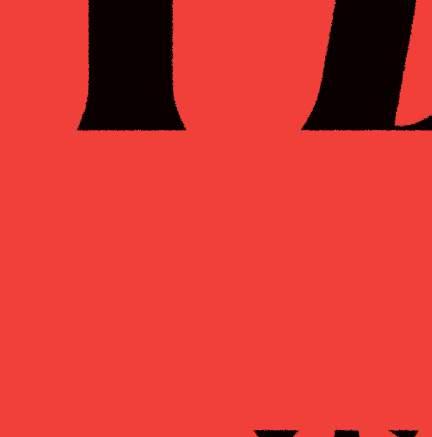
BY CAROL MOSKOT
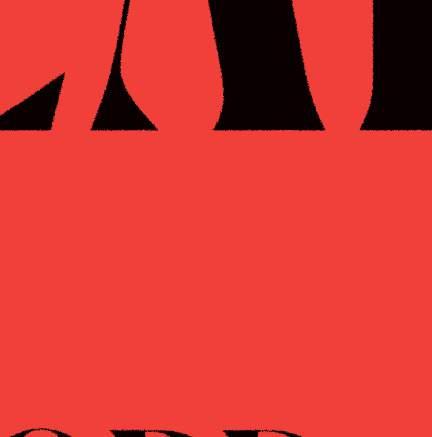

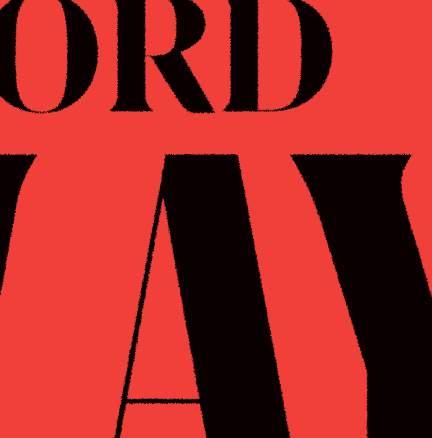

DESIGNING A MAGAZINE STARTS WITH DESIGNING ITS LOGO. A VISUAL HISTORY OF JEWISH TYPOGRAPHY AND CREATING SCRIBE QUARTERLY ’S NEW LOOK.

44 p. SPRING 2025
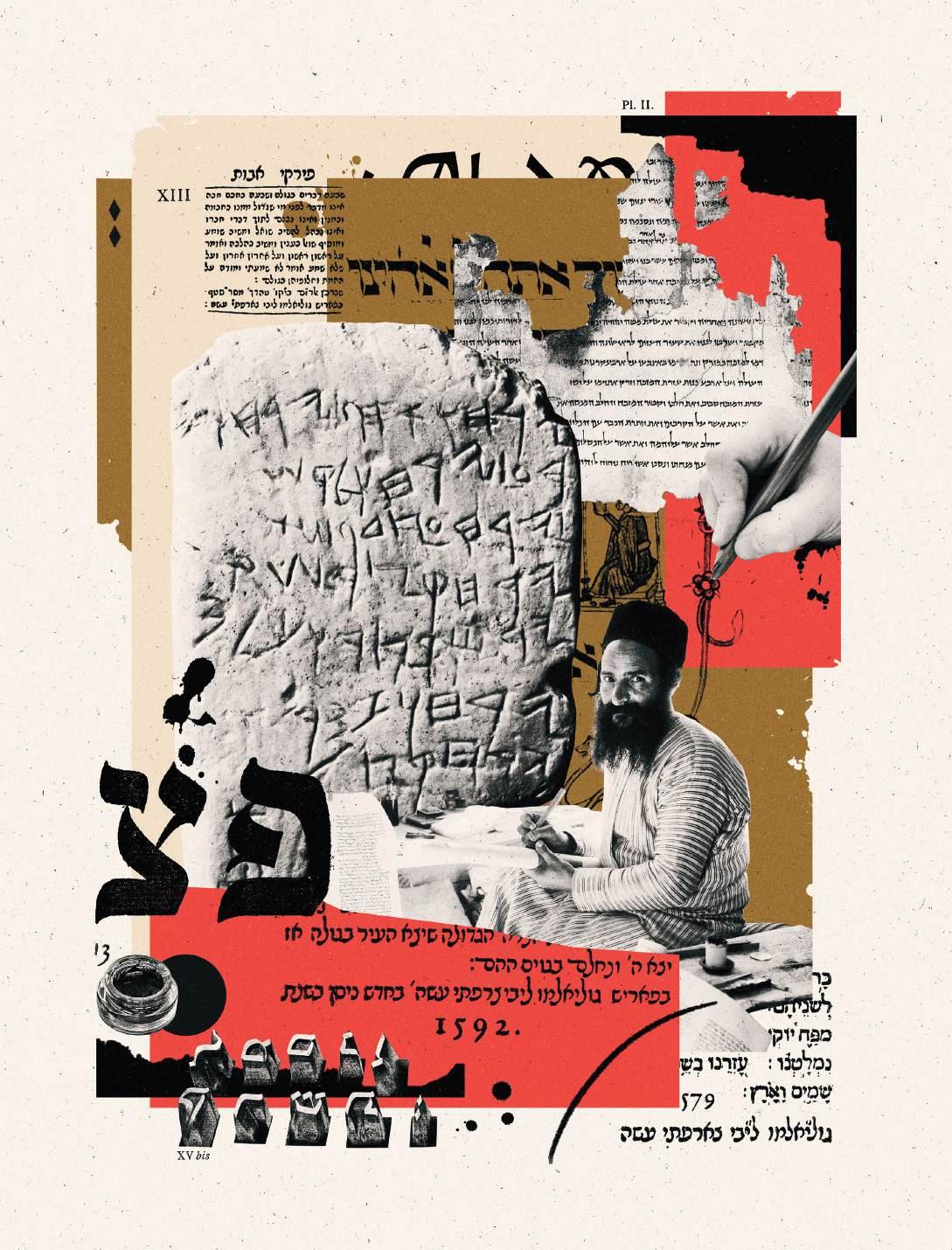



the art of organizing letterforms and text that makes words legible, clear, and visually appealing is more than just words on a page. It’s in every aspect of our lives: on our phone screens, in logos on product packaging, and on highway signs which need to be readable quickly while you’re moving at high speeds. Typography embodies not just styles and functions but emotions, intentions, and identities.
One of the biggest (and most fun) challenges in typography: designing a wordmark. (Wordmark is just the technical term for a logo that only uses typography; other logos may also use symbols, shapes, other graphic elements, or some combination of these). Designing a typographic wordmark that effectively encapsulates approximately 5,000 years of Jewish thought is a uniquely Jewish challenge. As a people, we are constantly exploring and balancing our deep historical roots with contemporary relevance. How can typography a tool of expression and purpose, yes, but one that is limited to geometric shapes and their arrangement on a page convey such a rich history, while also operating in a modern context? How can you channel that history without being stuck in the past?
Not all design missions begin with extensive historical research but, in this case, some was clearly called for. Given Scribe Quarterly’s name, would knowing more about scribes’ work and their role in creating ancient Hebrew script inform the new logo’s tone and flavour?
The scribes of ancient Israel were a tiny literate minority in an overwhelmingly illiterate and oral-based culture. These Jewish scribes were primarily responsible for copying and preserving the Hebrew scriptures, acting as experts on Jewish law by studying and interpreting the
Torah, and essentially serving as the legal and religious record keepers of their time. They were considered masters of Hebrew writing and were crucial in transmitting the Jewish tradition through written texts. Their main objective was to teach the Torah to the Jewish masses, and Jewish youth in particular. Ancient Israelite scribes also shared their ideas and language traditions with people from neighbouring cultures.
In the fifth or fourth century BCE, after the Jews returned from exile in Babylon, Ezra a direct descendant of Aaron and known skilled scribe is believed to have played a key role in gathering and standardizing the existing Torah scrolls, ensuring their proper transmission. You might say that Ezra was one of the first editors, essentially hiring scribes to write down and revise what had been, until that point, an oral tradition.
If ancient scribes were akin to our modern-day editors, perhaps studying the evolution of ancient scribal Hebrew could lead me to an appropriate choice of a modern typeface to serve as the basis of Scribe Quarterly’s logo. (You may be wondering why I am using the word typeface instead of the term you’ve likely heard much more often: font. A typeface is an overarching design or style of lettering while the word font refers to the specific variations with a typeface. For example, Arial is a typeface, and Arial Bold is a font.) I immediately began delving into examples of scripts used by ancient Hebrew scribes for Torah scrolls, and drawing visual connections to their modern digital counterparts.
The story of Jewish writing is an incredible journey through time and place. Hebrew script has dramatically changed over thousands of years, influenced by culture, religion, and technology. Hebrew script originates from the ancient Semitic alphabet which dates to about 1700 BCE. By the eighth century BCE, Aramaic, a branch of the Semitic script, was using modified versions of the original letterforms. Scrolls created between the third century BCE and the first century CE show a clear evolution of that scribal tradition. Many of the contemporary basic features of the Hebrew script are already present in these scrolls, and the text can be deciphered and read by almost
any present-day Hebrew reader.
The ninth century saw the dawn of a new era of the so-called ‘Oriental’ script. This script was developed in the Levant, Egypt, and Babylon. It is well-documented in the manuscripts found in the Cairo Geniza (a storehouse that contained many thousands of Jewish manuscripts and fragments of writing). These manuscripts introduced letterforms by scribal artists. They were refined, homogeneous, and balanced. Horizontal stresses emerged for the first time. The dense, embroidery-like texture of these Hebraic texts showcased narrow letterforms and extremely narrow spaces between words.
The Middle Ages brought two main influential Hebrew script styles: the Ashkenazic and the Sephardic. Both evolved from the Oriental script and are similar to today’s ‘square’ text faces. The Hebrew Ashkenazic style developed in Germany and Northeastern France from the thirteenth to fifteenth centuries. Jewish scribes used the quill as their writing tool and were influenced by Gothic Latin. The script featured extreme contrasts between thicks and thins (the contrast between width of the strokes that make up a letterform), heavy downward strokes, and lighter horizontal strokes. The Sephardic style was developed and used in the Iberian Peninsula for three hundred years until the expulsion of Spanish Jewry at the end of the fifteenth century. This manuscript style was less frilly than its Ashkenazic counterpart, narrower, and reduced to the letter’s essential parts. Sephardic Jewish scribes’ use of a pointed reed, popular among scribes of the region, created lettersforms with less contrasting thicks and thins. Lastly, the Sephardic style showed some reminiscence of Arabic calligraphy with its typical flowing rounded curves.
Within both of these scripts, three styles
TOP, Fragment of the Dead Sea Scrolls. The script is Aramaic ‘square’ style which is the same writing system one would recognize as written Hebrew today. MIDDLE LEFT, Sample biblical text in the original Hebrew (top) and the same text in the Aramaic version of the script from 500 BCE (middle), and the same script as it appeared at the start of the Common Era (bottom). MIDDLE RIGHT, the Gezer tablet is one of the oldest known examples of Hebrew writing, dating to the 10th century BCE.


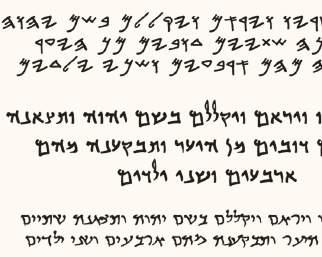
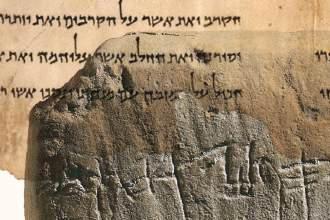


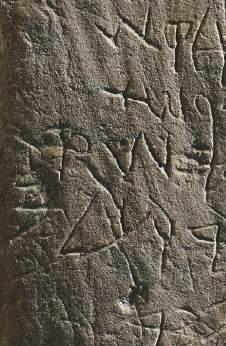
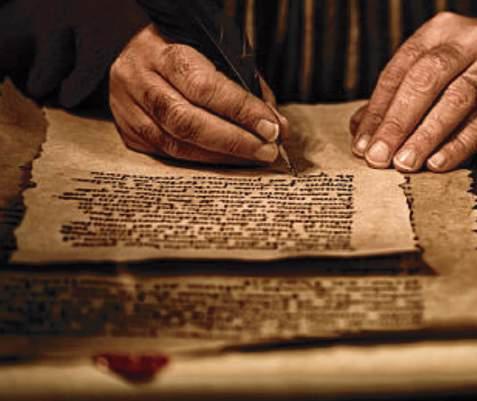
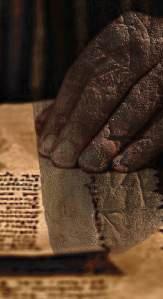
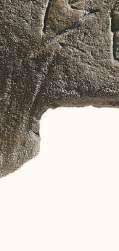




emerged: a formal ‘square’ letter used in book styles; a cursive, flowing style for correspondence and everyday use; and a rabbinical script (Rashi script) for religious commentary.
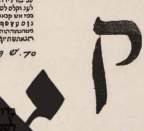



The first Hebrew books were printed in Italy in 1475 by immigrants from Germany and France, using typefaces based on the Ashkenazi style. In 1559, Guillaume Le Bé, a skilled craftsman working in France and Venice, became interested in Hebrew script and began manually carving its letter shapes into steel punches, part of the process of making movable letters for printing. He collected script samples and cut 19 Hebrew square and cursive letterforms. Neither Le Bé nor the printers who used his scripts were Jewish: The Most Serene Republic of Venice prohibited Jews from publishing books. (They weren’t printing them just on behalf of Jews, either; Hebrew texts were studied by many intellectuals and scholars.)
It was not until the first decade of the twentieth century that Hebrew script began to see significant changes in form. This was born out of a desire for more ‘secular’ and modern Hebrew typefaces during the rise of the Zionist movement at the end of the nineteenth century, and the revival of the Hebrew language. Jewish society was becoming less and less religious, and Hebrew was becoming a living language again. This meant that many more secular, everyday texts were being printed, and those called for earthly, secular typefaces ones that were visually streamlined and shorn of the elaborateness of the lettering that might appear in a prayer book.
TYPEFACES roughly fall into four groups: serif, sans serif, script, and display. Each has a specific use. Serif typefaces, for example, are used for their legibility: the small
TOP, CLOCKWISE, Closeup of two Le Bé Hebrew letterforms from a page of type specimens. He is best known for range of Hebraic typefaces that were used worldwide until the eighteenth century. Jewish scribes used the quill as their writing tool and were influenced by Gothic Latin. Matthew Carter and Scott-Martin Kosofsky made Le Bé Hebrew, inspired by the originals by Guillaume Le Bé. The influence of Le Bé’s typeface can be spotted in modern Hebrew typefaces as seen in the first Israeli Independence Day poster, designed in 1948 by Yohanan Simon.
Change shape of C serif to closer resemble angle and size of S serif.
Open counter connection on R & B to give more life, and a more calligraphic feel.
Made C slightly more narrow to close large hole in wordmark, brought in the right stroke ending.
projections that appear on the strokes of the letters can help guide a reader’s eye along the lines of text, which is why serif typefaces are easier to read (and why most magazines and newspapers use them for the bulk of their articles). Different typefaces also evoke different sensibilities, which I refer to as a “tone and flavour”; for example, a sans serif offers a more modern look while a script conveys elegance. These categories are fundamental to a designer’s choice of the right typeface for a project.
Designing a wordmark involves far more than settling on a typeface: there are countless decisions about size, capitalization, kerning (the spacing between letters), and configuration. After mocking up dozens of options, narrowing down to a list of three, and much debate, we decided to start with a typeface called Tangerine for Scribe Quarterly’s logo. The typeface is monumental in proportion and somewhere between a sans serif and serif. Its thicks and thins are reminiscent of Le Bé’s Hebraic font. Selecting it was just the beginning, however. Because the lowercase letterforms in Tangerine are quirky, I decided to set Scribe Quarterly in all caps but setting both
‘Kick out’ the leg of R to add warmth and width to the letterform.
Brought in top bowl of B and reduced the weight slightly, adjusted the shape to match the R more closely. In the Details Incremental tweaks to the letterforms in Scribe Quarterly’s wordmark.
Scribe and Quarterly in all caps in the same size would have been akin to yelling, so I downplayed the word Quarterly by reducing its size and placing it to the right. Then, because not all the letterforms felt perfectly balanced to us, I worked with a typographer (someone who specializes in typeface design) to modify some of them for instance, we widened out the R and adjusted the top “bowl” of the B to bring a greater sense of movement to the wordmark.
At the same time, I began adjusting the spacing between the individual letterforms. This is done by taking out or adding tiny amounts of space between each pair of letterforms until there is a visually pleasing and legible word. The goal is to ensure the spacing between the characters appears even and balanced to the human eye, especially where certain letters might appear too close together or too far apart. (Counterintuitively, simply using the exact same amount of space between all the letters does not achieve this effect.)
The wordmark you see on the cover of Scribe Quarterly may have taken its cue from Le Bé’s Hebraic typeface but, it was the breakthrough of digital font master Matthew Carter and typographer Scott-Martin Kosofsky that taught me that historic research is a worthy pursuit. Their fresh digital “cut” of Le Bé’s typeface inspired me because of its clarity and swooping beauty. As Kosofsky wrote about designing their Le Bé font: “You don’t throw out your visual culture because you’re trying to reinvent yourself. We’re a people with a tradition why should we lose it?”
EL AL wishes you a holiday filled with renewal, hope, and freedom.

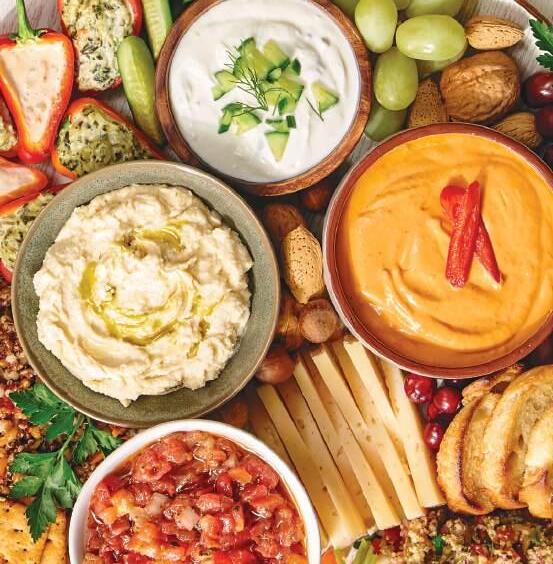


















































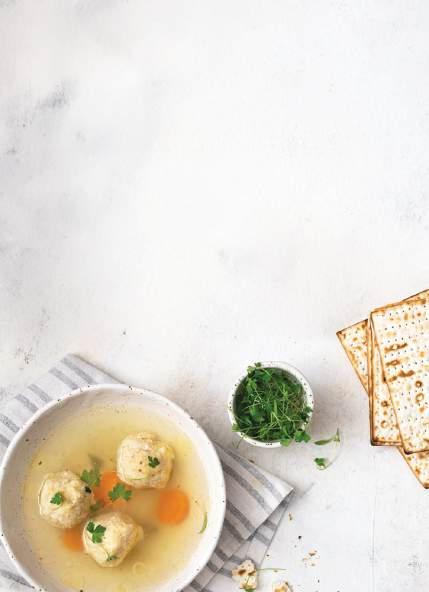

by COREY MINTZ
FOR A CO U PLE, is there a more loaded question than What’s for dinner?
When my wife texts this question at 2 p.m., I know she’s deciding whether or not to have cookies at the office. If I tell her I’m making one of her favourites, I might get a heart emoji response, perhaps even a “My hero!” A less descriptive “Yum,” or the follow up “Do we have salsa?” means that my dinner planning has not satisfied her emotional needs in that moment.
For Toronto restaurateur David Schwartz and his wife Lee-Tal Hatuka, the answer of what’s for dinner is almost always Chinese. The couple, recently married and expecting a baby, live in downtown’s Chinatown. Two of the three restaurants where Schwartz is co-owner and executive chef (MIMI Chinese, Sunnys Chinese) are dedicated to the regional specialties of Chinese cooking, which has so far been the central focus of his career. (The third, the recently opened Linny’s, is inspired by the deli-style food he grew up with, and showcases high-end takes on chopped liver and pastrami.)
Schwartz is following a long tradition of Jews in love with Chinese food. Joshua Eli Plaut, who serves as rabbi of Metropolitan Synagogue in New York, wrote a book A Kosher Christmas which (as you might expect from the title) explores this affinity. He dates it back to the turn of
Culture mashup
The long history of Jewish interest in Chinese food takes comforting shape in these deceptively simple eggs.
the twentieth century, when the two immigrant groups lived in close proximity in New York’s Lower East Side. “Jews would go out for Chinese food on Sundays, when they felt left out of church lunch,” he told VOX in 2020. Plaut cites the lack of dairy in Chinese cuisines in explaining the Jewish embrace of Chinese restaurants over the Italian options that were also prominent in the neighbourhood. Italian cooking’s frequent mixing of cheese and meat, along with the Christian iconography common in those spaces, made them a much less accessible option. Chinese restaurants were also a place where Jews could indulge in “safe treyf” a term coined by sociologist Gaye Tuchman for foods that may contain non-kosher ingredients such as pork or shellfish, but finely minced, or sufficiently hidden by a dumpling’s exterior, to give plausible deniability to the eater.
Though Schwartz is passionate about his noodle commitments which his wife doesn’t share these marital differences are fortunately not irreconcilable. “When we [would] go to Cantonese restaurants,” says Schwartz, “it took a lot of practice for us to get to a place where we had an order down that was agreeable for both of us.”
If marriage is about compromise, then finding the perfect sharing order with your spouse in a restaurant can be a Churchillian feat of negotiation. You’re both hungry, and therefore less rational than usual. Pushing too hard for the dishes you want, could breed resentment with a negotiating partner who you will
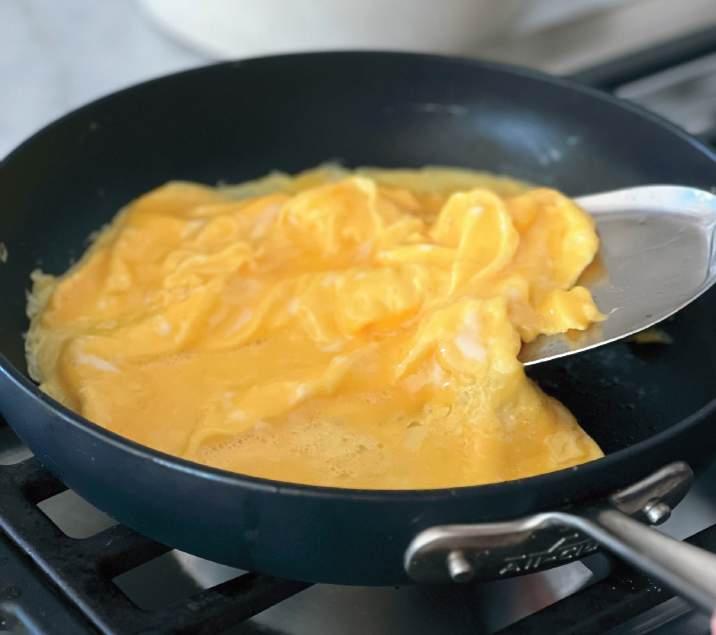
sleep next to that night, and for the rest of your life. “Why did I let you get that lamb dish?” is not something anyone wants to hear shouted at them from the bathroom at 2 a.m. “We have different preferences,” says Schwartz. “I like things with the grapple factor. She doesn’t.”
Grapple factor refers to foods that require more work to eat, compared to the North American expectation of proteins that are free of bones, shells, fat, or chew. This is Schwartz’ sweet spot. At dim sum, I’ve watched him immediately tick off the boxes for chicken feet and beef tendon.
“For example, a dish my dad and I used to always get at Swatow that I can only really eat when I’m not with Tal, because she will not indulge me in it, is their chicken hotpot,” says Schwartz. “Imagine eating chicken wings cut into thirds, fried and braised, and put in a sizzling pot with bamboo and black mushroom with chopsticks. And the skin is tight. It’s not crispy. She hates it because
Simple is best Though this seems like it might be an omelette, the trick of these eggs is in the cornstarch slurry.
it’s a lot of work. But I love it because it’s a lot of work.”
Hatuka, meanwhile, has her own preferences.
“She always wanted the battered fried stuff like lemon chicken or sesame chicken. Or another one that we battled over, that I’ll just never give into: Shanghai noodles, which have nothing to do with Shanghai. They’re branded that way on the bag by the company that makes them, but they’re nowhere to be found in Shanghai.” At Swatow Restaurant, a few blocks from their home, the couple has resolved their dinner order, which may be one of the greatest relationship investments they’ll ever make.
“We’ll interchange some things here and there. But, for the most part, we’ve got our staples,” says Schwartz. “We’re always getting the scrambled egg with shrimp and rice, ho fun (rice noodles), the Canadian broccoli with garlic sauce and shrimp, and wonton soup. Very specific. We’re fine tuned.”
If you ask a Jewish chef about
food they’re emotionally attached to, you can’t be surprised when they name Chinese dishes, and you therefore cannot be surprised if those dishes traditionally include pork or shellfish. But this dish is less about the addition of shrimp and more about the use of cornstarch and the technique of cooking the eggs, known as Whampoa chao dan. Though often billed on menu as “scrambled eggs on rice,” it’s closer in texture to an omelette.
The first time I made this dish, I was not prepared for how familiar it tasted for something I’d never eaten before. That first spoonful of egg, warm and slippery, slid down and comforted me as much as any bowl of chicken soup. Maybe it’s the MSG in the instant stock mix, reminding me of the Cantonese food of my youth. If you want to try it without the shrimp, any salty protein would be satisfying. However, I wouldn’t substitute anything else, but instead just focus on the texture of the eggs, a goal that took me a half dozen attempts to achieve. Blended with a thickening cornstarch slurry and cooked on a low heat to avoid too much colouring, Swatow’s eggs are bright yellow and saucy, studded with frozen peas instead of the usual scallions. They glisten like an oiled bodybuilder, likely the effect of an additional ladle of gravy poured over top.
“We eat it a lot. It’s very much a tradition for my wife and I, almost a weekly occurrence. But when Tal and I get sick, like now,” says Schwartz as Hatuka coughs, almost on queue. “She loves it. I love it.”
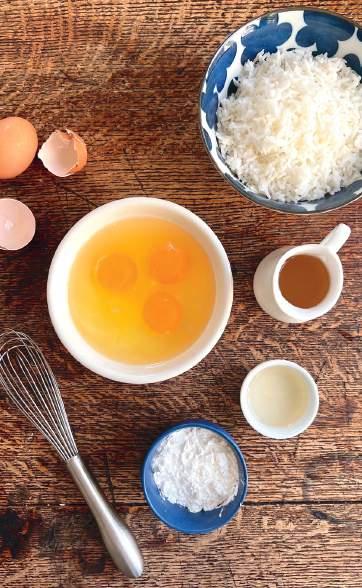
HUÁ DÀN XIĀ RÉN
• cornstarch
• Shaoxing cooking wine
• water
• chicken stock powder
• 4 eggs
• pinch of salt and pepper
• sesame oil
• scallions or frozen peas
• vegetable oil (or schmaltz)
• bowl of cooked jasmine rice
• chili oil (optional)
To make a slurry, whisk a small spoonful of cornstarch in a mixing bowl with a splash of cooking wine and water. Add the eggs and beat for a minute, until the yellow is totally mixed in and bubbles begin to form. Stir in pinches of chicken stock, salt, and pepper, then mix in the sesame oil and peas (yes, from frozen).
Since this dish is made with chicken stock, chicken fat is an amazing fat to pair with it if you have some on hand — otherwise, vegetable oil works nicely. Heat whatever fat you are using in a wok to medium heat.
Remove the wok from the heat and add the egg mixture. To attain supreme silkiness, the key is not to flip or turn the egg, which will result in in scrambled eggs. Instead, as the egg begins to solidify at the bottom, gently scoop with your spatula and layer on top of other cooked portions, tilting the wok so liquid egg fills in the spaces. Close to an omelette in texture, the appearance of the delicate layers should more resemble the folds of a soft sweater loosely tossed onto a bed. Repeat this process without too much agitation, moving the wok on and off the heat. In a few minutes, you’ll have a heap of egg that is cooked through, with a surface that is still slightly wet and shiny. Slide that from the wok and serve over cooked rice, with chili oil if you are so inclined.

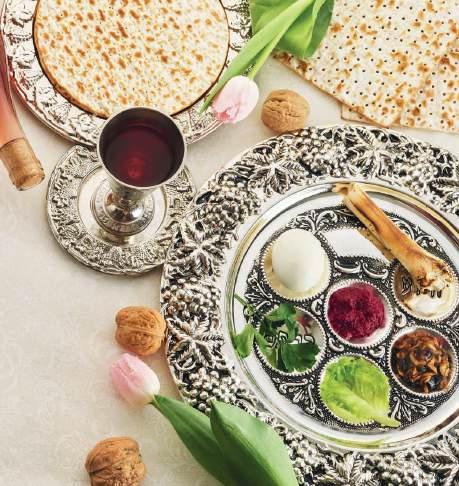



This spring, benefit from the warmth of friendship and community at Chartwell Thornhill, as well as delicious chef-prepared meals, engaging activities, housekeeping and flexible options if your needs change.
THORNHILL 784 Centre Street, Thornhill, Ontario L4J 9G7 289-588-0974
980 Yonge Street, Suite 30 Toronto, ON M4W 3V8
Phone: 416-924-4680 Fax: 416-924-4685
King Street East
ON L8N 1A6
Amarjit (A J.) Manhas, CPA, CA
Stephen Chesney, FCPA, FCA
Munsoor A. CKhan, PA, CA
H. GordonCLee, PA, CA
Allan Garber, CPA CA CPA, CA
Benjamin J Detsky, CPA, CA
Pei (Peter) Zhang, CPA, CA
Amarjit (A.J.) Manhas, CPA, CA
Jeffrey R Dessau, CPA, CA
Pei (Peter) Zhang, CPA, CA
Gurinder Bhatti, CPA
Matthew Aronoff, CPA
H Gordon Lee, CPA, CA
Munsoor A Khan, CPA, CA
Michael Hummel, CPA, CA
Maggie Mierzejewski, CPA
and corporations
Stephen Chesney, FCPA, FCA
Benjamin J Detsky, CPA, CA
Lauren Cole, CPA, CA
Zach Grossman, CPA, CA
Graeme Parker, CPA, CA
20 Holly Street, Suite 400, Toronto, Ontario M4S 3E8 & 45 Vogell Rd., Suite 510, Richmond Hill, Ontario, L4B 3P6
Tel: (416) 485-6000 www.yalepgc.ca
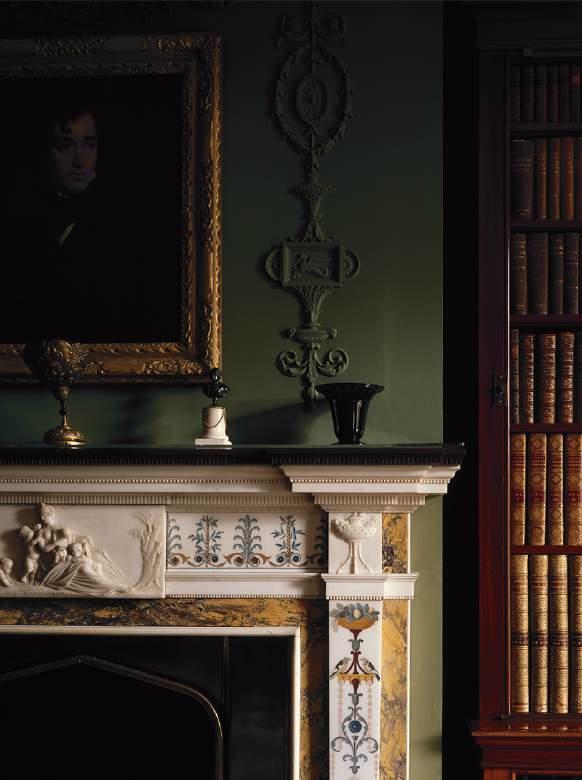
When you’ve been shut out of land ownership for centuries, can buying a lavish manor house be a form of resistance?
by PHOEBE MALTZ BOVY
ON THE BRITISH SITCOM To the Manor Born (1979-1981), a posh and haughty Englishwoman named Audrey fforbes-Hamilton finds herself widowed and financially obliged to sell her stately home in the countryside and move into a none-too-shabby outbuilding. The buyer is one Richard DeVere, proprietor of Cavendish Foods, previously residing in London. A newmoney tycoon. The nerve of him, buying property that rightfully belongs to the aristocracy!
Richard may be self-made, but he wants to do right by his new environs. He just hasn’t a clue how to take on that role. If you’ve ever watched a TV show before, you can guess where this is headed. Audrey and Richard become a couple, thereby fusing old money and new.
New, and suspect: Richard, it turns out, was born Bedřich Polouvicek. While he seems every bit the British gentleman, Richard’s roots are exposed whenever his clingy, heavily accented mother shows up. “We came over in 1939, from Czechoslovakia,” Mrs. Polouvicek informs a horrified Audrey, who had until that point thought the elderly woman was Richard’s maid. “Do you mean he isn’t English at all?” Audrey’s husband is not just new money, but an obscenely wealthy Eastern European foreigner.
Is he meant to be, you know…?
Richard DeVere is not an explicitly Jewish character. Jewish-coded, though, is no stretch: the character is likely based on Sir James Goldsmith, of Cavenham Foods, a member of the Rothschild-associated Goldschmidt family.
ABOVE Benjamin Disraeli’s Hughenden Manor.
The message the show sends is that you can buy your way into the gentry, but only if you abide by its traditions and find an aristocrat prepared to fall in love with you. Acceptance is possible but must be coaxed over the course
of many episodes. You can’t just pay up, move in, and expect that this would be enough.
As in sitcoms, so too in real life.
“CO U NTRY HOUSES conferred on their inhabitants a significant position in the local community sometimes even stewardship of its affairs.” So explains the collaborative introduction of Jewish Country Houses, a collection published late last year that is part academic anthology and part coffeetable book. Prior to emancipation, European Jews were, with rare exceptions, barred from property ownership, kept out of many professions, and otherwise legally constrained. The lifting of these legal restrictions did not immediately bring about social or economic integration, but in time some Jews became, in effect and sometimes in fact, aristocracy. What did it mean that a Jew could become a member of any part of mainstream society, including lord or lady of the manor?
The prospect of wealthy Jews displacing old-stock European nobility would come to be one of the main anxieties animating modern Western antisemitism. What could be more urgent, then, than a book about the Jews who did just that?
Edited by curator Juliet Carey and historian Abigail Green (herself descended from the Sebag-Montefiore family), with photographs by Hélène Binet, the thesis of Jewish Country Houses if you can say a book this massive, complicated, and multiauthored has a thesis is that manor houses can function as a site of resistance. Yes, the book is about rich people owning unfathomably lavish homes, but it was also, as Green told The Forward, “subversive” for Jews to be feudal landlords indeed to be landowners at all.
This invoking of subversiveness in

the context of something deeply conventional (admiring enormous, beautifully appointed houses) reminded me of filmmaker Greta Gerwig’s much-quoted remark about her approach to making the Barbie movie, “I’m doing the thing and subverting the thing.” The film is intended as both a feminist critique of the dolls and a promo for those same items.
Much like the homeowners themselves, Jewish Country Houses does the thing and subverts it. The book is to the country-estate coffee-table book what a Jewish tour of Europe is to a generic European tourist holiday. You can read the text and get an education on modern Jewish history, or you can flip through the art photos and gawk. The book’s audience is anyone who possesses both a desire to look at and enjoy the continent’s beauty and an irrepressible awareness of how things went, in Europe, for its Jews. The Holocaust, but not just: “This is not simply a book about country houses,” the editors write in the introduction, “it is
also a book about Jewish memory in post-Holocaust Europe.”
The sombre cover image evokes the darkness of the history. But in a way, paradoxically, the subversiveness of the project encourages a kind of guiltfree appreciation of the luxury it depicts. A usual response to gazing at splendour along those lines that ineffable mixture of wishing your own home looked like that, and resentment at the unjust world in which some have multiple palaces and others no homes at all starts to seem beside the point when you read the stories of families losing their properties and, in many cases, their lives.
JEWISH Country Houses is a multilayered book, serving a variety of purposes. One is an ode to the beautiful homes themselves, hauntingly captured by Binet. It’s a richly illustrated book, one with its very own gold bookmark ribbon, with paintings and renderings of the houses and their inhabitants, and photos of other historic
artifacts. An 1881 painting by Pierre-Auguste Renoir, Pink and Blue (Alice and Elisabeth Cahen d’Anvers), depicts two little girls, members of one of the upscale families profiled. (They had been Cahens but, writes curator Alice S. Legé, “acquired a new and aspirational surname” one rooting them in the French spelling of Antwerp, as befits a family commissioning paintings from Renoir.) Their outfits are the indirect aesthetic inspiration for what my own young daughters wear from H&M today, all pastel and tulle. It’s a pretty, inoffensive painting, the sort that could be up in a waiting room and you wouldn’t think anything of it. A caption explains what came of them: “Alice, on the left, married a British army officer; Elisabeth died on the way to Auschwitz in 1944.”
The text, individual essays by different historians and curators, tells the story of families who seemingly had everything until the tide turned against Jews and everything was not, in many cases, enough. Moreover, here were the very Jews doing the most to be ‘rooted.’ Even they weren’t safe.
The symbolic significance of Jewish manor-house ownership prompted nineteenth century antisemites to rail about Jews’ displacement of the aristocracy. Alphonse Toussenel’s 1845 Les Juifs, rois de l’époque (The Jews, Kings of the Age), a foundational text of socialist antisemitism, is among the earlier and better-known examples. It is cited in the chapter on James de Rothschild’s Château de Ferrières a house that inspired criticisms not dissimilar to those made these days of so-called McMansions. Big and ornate, but distasteful, some felt, and not in keeping with any existing style. “The underlying theme of this château,” writes Pauline Prevost-Marcilhacy, who researches the Rothschilds, “is regal power, wielded not by a conventional monarch but by
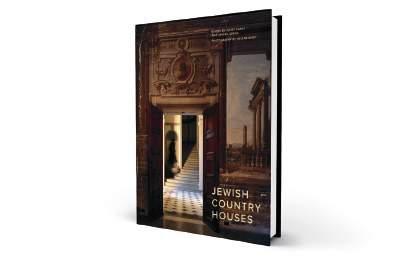
Edited
by Juliet
Carey
&
Abigail Green
Brandeis University Press November 7, 2024
James himself, defiantly subverting antisemitic attacks on his influence and position.”
This specific anxiety about wealthy Jews becoming Europe’s new aristocracy kept pamphleteers busy. The daughters of Jewish bankers were marrying decadent aristocrats! New money had replaced that which was genteel and gentile. Per the introduction of Jewish Country Houses, “As the wealth of the landed aristocracy waned, they looked to marriage with members of the industrial and financial elite, including Jews, as a means by which dilapidated estates could be returned to their former glory.” Not everyone loved this. Antisemites, for example. The old Christian nobility may have been a much-despised elite (recall the 1789 French Revolution), but they were part of a known system; Jews were interlopers. (Insofar as nineteenth century antisemites understood Jews as being ‘from’ anywhere, it would either have been wherever a Jews’ family had last lived, or Palestine, in the pre-1948 sense of ‘Go back to Palestine.’) Nor was this sentiment confined to Europe: an American “postscript” reveals just how much exclusion Jewish Americans faced in high society during these years. A country doesn’t need an entrenched aristocracy to come up with its own old-money versus new-and-foreignmoney distinctions.
Jewish Country Houses is a brilliant and beautiful book whose complexity I fear I cannot do justice to as a reviewer this despite knowing the history of French Jewish dynasties from doctoral research, and the interiors of British manor houses from such shows as Downton Abbey and Midsomer Murders . I had no idea that Highclere Castle, where Downton was filmed, had been “lived in and renovated by Alfred de Rothschild’s illegitimate daughter, Almina,” but could not be more here for this information.
The family stories are all interesting in their own ways, but the standout is author Helen Fry’s chapter about the Sassoon family manse becoming the site of Second World War espionage and covert gay gatherings. High-ranking Nazi prisoners of war got a bit too comfortable in the manor house lavishly hosting them, didn’t realize the place was bugged and what do you know, the Allies won the war.
EVERY PROJECT asserting a Jewish theme every Jewish Studies syllabus, every Jewish publication has its own way of defining what constitutes Jewish subject matter. Will only practising Jews be included in a study? Only those active in community organizations? In the case of Jewish Country Houses, subjects include observant Jews and secular Jews, philanthropists supporting Jewish causes, as well as those without communal ties. This strikes me as both correct and, given the subject matter, inevitable. Jews of different sorts owned stately homes, and the goal is a greater understanding of how European Jews lived.
I was less persuaded by the choice to include the homes of converts from Judaism to Christianity and their never-Jewish spouses. Were these “Jewish country houses” properly under-
stood? Indeed, I did not expect to find Victorian prime minister Benjamin Disraeli’s estate, Hughenden Manor, included. Disraeli’s childhood baptism was a pragmatic conversion, but Disraeli was not privately practicing Judaism. “Benjamin never forgot his Jewish heritage,” writes Hughenden custodian Robert Bandy, in a chapter that also includes evidence of the pains Disraeli’s antisemitic contemporaries took to make sure he remembered it. If other people see you as a Jew, but you say you’re something else, who gets the determining vote?
I suppose Country Houses of People Antisemites Saw as Jews and Who Might Have Also Seen Themselves as Jewish would have been too clunky a title. But that’s a more precise way of looking at it. The overarching fact about all these people was that the world around them saw them as Jews, regardless of whether they were regulars at the synagogue or churchgoers with a secret. Nino Strachey a historian related to her subject writes, of Frances Waldegrave, Strawberry Hill’s owner, “Regardless of her mother’s ancestry, or the faith in which she and her four successive husbands had been raised, Frances figured as the Jewish Lady Waldegrave, her good reputation held perpetually in balance against the weight of hostile prejudice.” This is the story, then, of obstacles on the road to full assimilation.
Strachey’s chapter includes a section called “Asserting her Jewish identity” thereby claiming that this is a thing Frances did. This assertion consisted of, among other faint hints, a painting of Masada by a non-Jewish artist (Edward Lear) and a portrait of her own father, who was Jewish. I’m not persuaded that Frances was asserting anything of the kind.
The stories of people widely understood by their contemporaries as
Jews belong in the study of Jewish history, regardless of whether these people understood themselves to be Jews. But once the title is Jewish Country Houses, it is Jewish country houses the authors all set out to find. The case studies themselves at times seem to be projecting a kind of Jewish identity or even Jewish pride onto people who didn’t necessarily give evidence of the same. The bar is set so low, encompassing anyone who did not outright deny all Jewish ancestry.
A wall in Nymans, a British manor house built and rebuilt by members of an originally German-Jewish family that had become Christians, has a Star of David as part of its décor. It is “the most tangible indication that Leonard Messel, a practising member of the Church of England, had not forgotten his Jewish roots,” according to author and academic John Hilary. Hilary goes on to explain that even this may not be what it looks like. “Leonard had become an avid Freemason at the same time as the new Nymans was being constructed, and the six-pointed star bears an important significance in the Masonic tradition,” and is found “prominently on façades” of other well-known buildings in that context.
In other words, Leonard very possibly had forgotten his Jewish roots. Leonard’s wife, Maud, was not from a Jewish family. What we’re left with is the story of a house owned by nonJews, with one tiny detail that one could choose to interpret as a nod to Jewish heritage, but one would probably be wrong in doing so.
Hilary writes of the Messels’ “successful integration,” but the more accurate word would be assimilation, not in a derogatory sense but a descriptive one. To speak of this as success is merely to say that Nazi-style racial antisemitism wasn’t always a dominant force.
And even the Nazis didn’t use a onedrop ancestral rule for Jewish origin.
Moments like this serve as a reminder that part of the reason the Jewish history of these houses has gone unremarked the lacuna Jewish Country Houses seeks to remedy is that the owners themselves weren’t much remarking on it. (“When such houses do open to the public, visitors often encounter a striking failure to engage with their Jewish context.”) Some of these are houses that ceased to be “Jewish” in any real sense long before the Second World War and longer still before contemporary historians and preservationists started trying to make sense of them.
What this highlights is the tricky nature of doing modern European Jewish history, when so much of it is about people whose Jewishness was, as archeologist and art historian Henri Lavagne writes, “expressed discreetly.” Antisemitism absolutely affected people of Jewish origin who didn’t identify religiously as Jews. You can’t study Jews and skip the ones who opted out, or did their darndest. But there’s a way to do this that doesn’t involve placing every hint of their continued Jewish identification under a magnifying glass.
At times, a “Jewish” reading of details in the homes requires a bit of straining, even when the subjects’ Jewishness is not in doubt. James de Rothschild was certainly Jewish, but Prevost-Marcilhacy’s analysis of “two spectacular [art] works with biblical themes” amounts to, maybe this was about asserting Jewish identity, maybe not. Given the relationship between Judaism and Christianity, an Old Testament reference in Western art is possibly less of a tell than a Ben Shahn print.
Similarly, Théodore Reinach, “a very sincere Jew,” not to mention founder of France’s first reform syn-

agogue, is a clear choice for a book about Jews with epic houses, seeing as he owned a (gorgeous) Greek-style one on the French Riviera. Lavagne nevertheless asks why Villa Kérylos was “so completely lacking in references to Judaism.” There are nevertheless some “allusions.” A bathroom with a pool may be a reference to the mikveh, and there are some Star-ofDavid mosaics. It feels forced. Why can’t Reinach’s truth have been that he was a proud Jew who didn’t feel the need to include this facet of his being in his decorating choices?
I’m now imagining a scholar coming into my Toronto kitchen, a century after my own demise, noting its blue cabinets and white walls, and explaining that this was intended to evoke a tallit, or an Israeli flag. After all, the owner worked for The Canadian Jewish News. And I wouldn’t be there to explain that the colour scheme was inspired by something I once saw in a New York Times Real Estate section article about a house in New Jersey.
THE BOOK covers so much ground, literally and figuratively, that it took me a moment to notice a missing piece: Jewish Country Houses obscures the extent to which Jewish feudal-style landowners were the exception among Jews. If this book were your introduction to the general subject matter of modern European Jewish history, you’d be forgiven for thinking that, following emancipation, most Jews promptly took up ownership of formerly aristocratic dwellings or constructed their own. The book would have therefore benefitted from more context about European Jewry at the time. What proportion of Jews in each of these countries were in the stately-homeowner caste across this period? But also: What were their relations like with poor and middle-class Jews?
This, from the introduction, seems correct: “[T]hese houses cannot simply be understood as symbols of wealth, power and exploitation because, uniquely, they also served as a vehicle for the emancipation of a
historically persecuted and disadvantaged minority.” Is this how ordinary nineteenth and early twentieth century European Jews would have seen it at the time? The introduction spells out that, apart from Eastern Galicia, with its “Yiddish-speaking farmworkers,” the extensive staff of these homes tended not to be Jewish, because few Jews lived in those areas of rural Europe. Jewish servants were unlikely to be serving Sebag-Montefiores their tea, or the Cahens d’Anvers their croissants. But would they have found Rothschild-built mansions impressive, or would they have scoffed and gone back to work, with breaks to read Marx?
Exploring how ordinary Jews viewed mega-posh ones is beyond the scope of the book, which is more focused on architectural choices than on the sorts of inter-class relations explored by social historians or in Upstairs, Downstairs. But it would have been helpful to emphasize that not all Jews are gazillionaires. I suspect this context was omitted because, to historians, it’s obvious. It is less so, I suspect, to readers, and it’s needed to get at what it meant for antisemites to latch onto the idea of the rich Jew. While very wealthy Jews were the victims of antisemitic campaigns some detailed in Jewish Country Houses and not necessarily able to parlay their funds towards escaping genocide, Jews without their means were despised for privilege they did not in fact possess.
The Holocaust is the end point to many of the stories in Jewish Country Houses, but not all. The book reminds that British Jews had a different experience than those of continental Europe. Some of the English stories are ones of a gradual, but ultimately quite seamless, assimilation into the aristocracy. If Richard DeVere were a real person, and not the foil to a Penelope Leach television character, he’d fit right in.






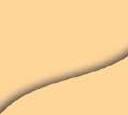









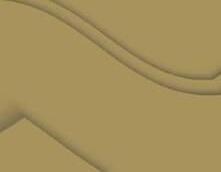

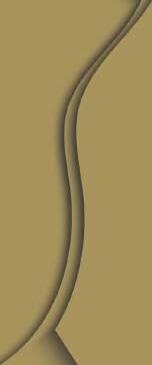

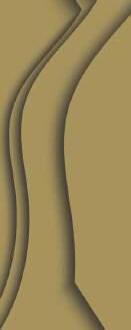

On October 7, Israel experienced the largest catastrophe in its history and is now facing a devastating situation: an entire population in trauma.

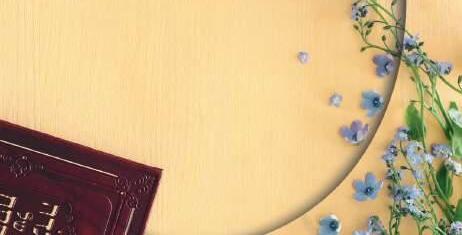






With your support CHW’s 2025 Annual Campaign will help heal the minds and bodies of soldiers and civilians at Shamir Medical Center and Hadassah Hospital in Israel.
Together, we can save lives, provide hope, and build futures. There is HOPE ON THE HORIZON for the people of Israel.


































BOOKS, MOVIES, AND OTHER
by MARC WEISBLOTT

SETH ROGEN and creative partner Evan Goldberg took the cinematic comedy scene by storm in 2007 with Superbad, a screenplay based on their own high school experiences in Vancouver. Seven years later, their political satire The Interview, about a bungled assassination attempt on North Korean leader Kim Jong Un, had its theatrical release scuttled due to pressures from North Korea accompanied by a hacking of Sony Pictures — and Rogen became seen as a less bankable star. Clearly, he realized, this meant it was time for him and Goldberg to go deep on satirizing the uncertain state of movie studios in a streaming tv series. Episodes will roll out weekly through May.

/ ACTION
THE AMATEUR In theatres April 11
ROBERT LITTELL’S SPY NOVEL about a rogue CIA cryptographer trying to escape Czechoslovakia after killing the terrorists who killed his wife was first made into a Canadian movie in 1981. This new adaptation concedes that the Iron Curtain may be long gone, but argues you can still avenge a murder by blackmailing federal agents. Rami Malek plays the title character, and The Marvelous Mrs. Maisel star Rachel Brosnahan plays his wife. In Jewish writing trivia: Littell’s first book credit was 1969’s If Israel Lost the War, and former prime minister Shimon Peres recruited him to co-write For the Future of Israel, about the Oslo negotiations. In further evidence of eclecticism: earlier this year he published Bronshtein in the Bronx, inspired by Leon Trotsky’s pre-Russian Revolution visit to New York.

NON-FICTION / COOKING
BEEJHY BARHANY, owner of the Tsion Cafe in the Sugar Hill neighbourhood of Harlem, was spurred by post-October 7 antisemitic vandalism to secure kosher certification for her decade-old New York eatery. Her cookbook includes café menu items like shiro wat, gomen, and injera (chickpea stew, braised collard greens, and fermented teff flatbread, respectively) alongside recipes for Yemeni pancakes and jollof rice from West Africa, Sudanese doughnuts, and Queen of Sheba chocolate cardamom cake. Profiles of fellow members of the Beta Israel community of Ethiopian Jews who found a new home in Harlem round out the book.

HOME OF THE NOSH
Raegan Steinberg, Alexandre Cohen, and Evelyne Eng Appetite by Random House
May 6
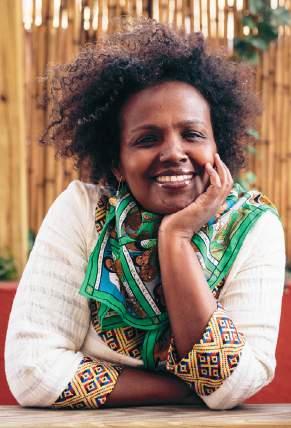

GURSHA: TIMELESS RECIPES FOR MODERN KITCHENS, FROM ETHIOPIA, ISRAEL, HARLEM, AND BEYOND Beejhy Barhany and Elisa Ung Knopf, April 1
MONTREAL has a luncheonette whose existence was inspired by the tastes of one man: Arthur Steinberg. After he died, in 2006, Steinberg’s daughter Raegen was driven to pursue a culinary career in his honour. Working in restaurants led her to meet her future husband; the couple started a catering business that pivoted into Arthurs Nosh Bar in the proto-hipster neighbourhood of Saint-Henri. Their cookbook covers everything the eatery is known for: syrniki pancakes, roasted lamb shoulder with saffron, and the dafina dish that originated as a Moroccan slow-cooker staple for Shabbat.
FICTION / ROMANCE

OFF MENU
Amy Rosen ECW Press June 17
A FIXTURE of Toronto food journalism (she recently contributed an essay about matzah balls to the anthology What We Talk About When We Talk About Dumplings) is trying her hand at a beach read. The premise: twenty-something protagonist Ruthie Cohen’s bubbe’s has left her an inheritance of $62,863.42 with one instruction: “Follow your passion, Dollface.” This inspires her to learn the art of French cuisine in classes where she meets an unattainable object of desire, all while dealing with the prospect of reuniting with an earlier vacation fling. Presumably there’s some cooking in the story, too.

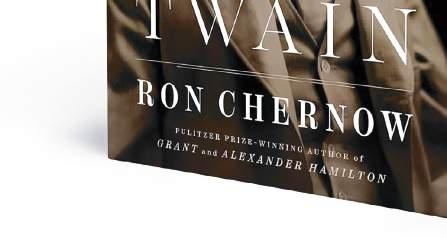
NON-FICTION / BIOGRAPHY

NON-FICTION / BIOGRAPHY

EMINENT JEWS: BERNSTEIN, BROOKS, FRIEDAN, MAILER
by David Danby
Henry Holt, April 8

MARK TWAIN
Ron Chernow
Penguin Press
May 3
WAS THE ALTER EGO of Samuel Langhorne Clemens an antisemite or not? The question has been bandied about ever since Twain penned the 1899 essay “Concerning the Jews,” based on his observations about how Jews were treated in the Habsburg Empire. While he called Jewish people unpatriotic for not joining the U.S. military — even though they did in a greater per capita number than other groups — he later retracted that statement. This new biography by Chernow (whose earlier tome on Alexander Hamilton directly inspired the stage musical) comes in at exactly 1,200 pages, covering Twain’s birth shortly after Halley’s Comet appeared in 1835 to the death that came soon after its next appearance 74 years later — as the increasingly eccentric writer predicted.

WRITING ABOUT reading has long been a passion for this former New Yorker film critic, reflected in his 1996 bestseller Great Books, which chronicled his middle-aged engagement with the Western canon through courses at Columbia University. Subsequently, he got attention for American Sucker — a memoir about losing big on the stock market — and a polemic about the prevalence of Snark. Now that he’s into his eighties, a lifetime of thoughts on the impact of Leonard Bernstein, Mel Brooks, Betty Friedan, and Norman Mailer are synthesized into a volume about how music, film, feminism, and literature were influenced by a common heritage.

The rabbi who rode on the bus
MY LEGS WERE PRAYING: A BIBLIOGRAPHY OF ABRAHAM
JOSEPH HESCHEL
Or N. Rose with Rabbi Dov Peretz Elkins
Monkfish Publishing May 16
ON THE HEELS of the sixtieth anniversary of Martin Luther King Jr. leading 8,000 protesters on a march from Selma to Montgomery comes a short book about the kippah-clad rabbi who joined on the front lines. Born in Warsaw in 1907, Heschel settled in Cincinnati in 1940 to helm the Hebrew Union College of Reform Judaism, then moved to New York for a posting with the Conservative movement’s Jewish Theological Seminary. Susannah Heschel, who followed in his scholarly footsteps — and introduced the idea of adding an orange to the Passover seder plate, as a symbol of inclusion — endorsed this book by writing the foreword.
BOOKS / FICTION
MISOPHONIA
Dana Vowinckel
HarperVia
May 6
DANA VOWINCKEL’S DEB U T NOVEL , The World in a Ziplock Bag, is told from the perspective of a 15-year-old Jewish girl named Margarita, whose life careens from Jerusalem to Berlin to Chicago —much like the author’s. After she won a major German literary prize for that book, publishers decided to make the story more available to international audiences. Margarita’s father works as a synagogue cantor in Germany while her mother long ago departed for Israel; amidst the domestic chaos, she’s sent to live with her grandparents in America.
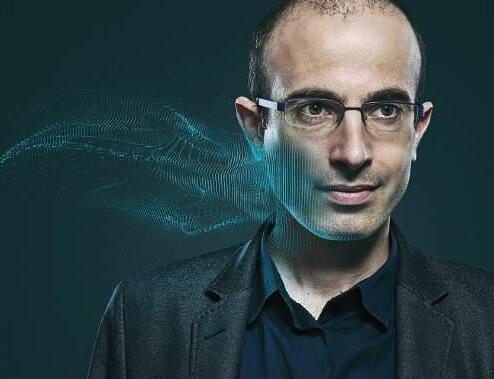
SAPIENS: A GRAPHIC HISTORY, VOLUME 3: THE MASTERS OF HISTORY
Yuval Noah
Harari
Signal
May 27
THE THICK BOOKS by Israel’s most globally popular public intellectual, like last year’s Nexus, lead a lot of readers to wish for a more digestible approach, and he’s spent the past few years delivering it in an adaptation of his first major work. The third volume of his comic-book-style retelling of his blockbuster ponders whether humanity is united by empire, money, religion — or something else entirely. The characters who try to dominate society, Harari argues, often end up dividing it instead. (Middle-grade readers get their own parallel set of big-picture explorations, drawn out in another Harari series called Unstoppable Us.)

NON-FICTION / JEWISH LEARNING
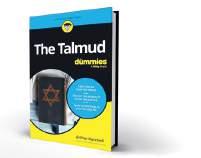
TALMUD FOR DUMMIES
Arthur Kurzweil
Wiley
May 13
DOS FOR DUMMIES WAS PUBLISHED in November 1991 — and a publishing juggernaut was born: it has spawned over 1,600 titles. It took a decade for Judaism to get its own volume, written by Rabbi Ted Falcon of the Reform Movement along with technology writer David Blatner. Kabbalah for Dummies got its turn in 2006, and Torah for Dummies surfaced in 2008, under the supervision Kurzweil, who ran the pre-internet Jewish Book Club — and now he’s returned to distill 2,771 imposing pages spread over 63 hulking volumes into a basic navigational guidebook. It may even stay in print longer than new titles like Bluesky for Dummies or Polyamory for Dummies.
FICTION / GRAPHIC NOVELS
HONORIA: A FORTUITOUS FRIENDSHIP
Janice Shapiro
Phantagraphics
April 1
A CAREER that started with screenplays and short story writing pivoted to personal comic-strip confessions with Shapiro’s series called Crushable: My Life in Crushes from Ricky Nelson to Viggo Mortensen. (Other subjects of affectionate celebrity worship: Neil Young and Mary Tyler Moore.) Her debut graphic novel focuses on real-life socialite Honoria Murphy Donnelly, who died in 1998 at age 81. In this treatment, the daughter of the couple from modernist Europe is paired for a summer with the daughter of American family friends, and the two try and figure out their place amidst the swirling social scenes along the French Riviera of 1929.
NON-FICTION / BIOGRAPHY
CRUMB: A CARTOONIST’S LIFE
Dan Nadel
Scribner
April 15
ROBERT CR U MB began his sixdecade-long career by illustrating greeting cards and proceeded to raunchy characters like Mr. Natural and Fritz the Cat — and, among his later works, an illustrated version of The Book of Genesis (although its explicit portrayals of the likes of Adam and Eve weren’t necessarily as subversive as most anticipated). The underground comics pioneer eventually settled down in the south of France with his wife and collaborator Aline Kominsky-Crumb. This is the stuff that big biographies are made of.

FICTION / SHORT STORIES
AUTOCORRECT: STORIES
Etgar Keret (translated by Jessica Cohen and Sondra Silverston)
Riverhead Books
May 27
WORKING WITH RESEARCHERS at Tel Aviv University, the celebrated graphic novel writer turned short-story specialist spent much of the past year trying to figure out if artificial intelligence could write better fiction than people, only to come away feeling that his own students had more human talent than anything generated by machines. Throughout his seventh original bound collection, consisting of 33 separate pieces, humanity navigates technology — and the two tend not to get along.
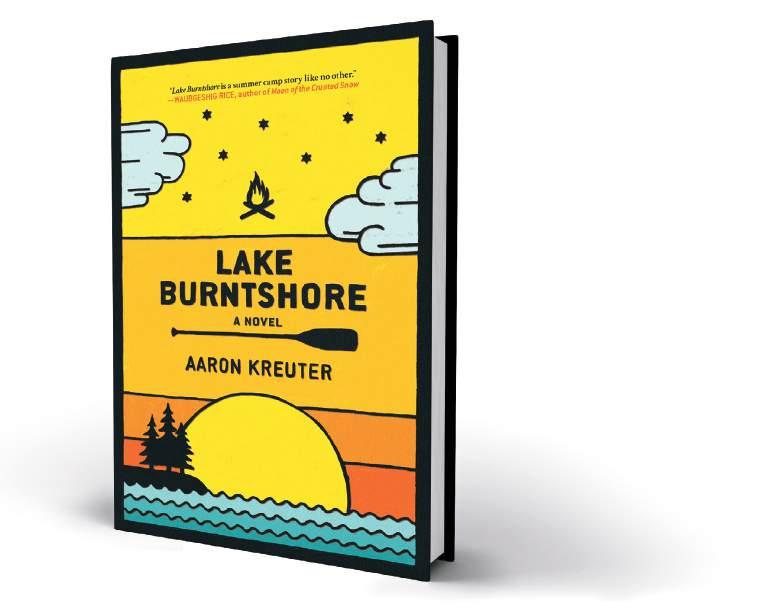
FICTION / YOUNG ADULT
LAKE BURNTSHORE
Aaron Kreuter
ECW Press April 22
A COMING-OF-AGE novel about a Canadian camp counsellor who falls in love with one of the Israeli soldiers imported for the summer to deal with a staff shortfall — even though his role in the IDF is at odds with her own stance about Israel. It’s the follow-up to Rubble Children, a collection of short stories based on a fictional Reform synagogue in the Toronto suburb of Thornhill, where hormonal urges similarly collide with the struggles to navigate narratives about the Middle East.
Jewish Community Organizations, Synagogues and Schools join our brothers and sisters in Israel in celebrating a Happy and Kosher Pesach.
We pray for peace with security and honour.

Adath Israel Congregation
Beit Rayim Synagogue & School
Bernard Betel Centre
Beth David B’nai Israel Beth Am
Beth Emeth Synagogue
Beth Sholom Synagogue
Beth Tikvah Synagogue
Beth Tzedec Congregation
Canadian Friends of Ezrath Nashim - Herzog Hospital
Canadian Friends of Yad Sarah
Canadian Magen David Adom for Israel
Congregation Beth Haminyan
Congregation Habonim
Holy Blossom Temple
Na’amat Canada Toronto
Pride of Israel Synagogue
Reena
Temple Emanu-El
Temple Har Zion
Temple Kol Ami
Temple Sinai Congregation
The Song Shul



You need a specialist insurer


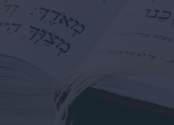
We’ve been by your side for over half a century and as times and challenges change, we always will be. Our specialists share your passion for your community, and provide the tailored products, tools and guidance you need to care for your church and your congregation. Our specialists make us who we are. Visit us at ecclesiastical.ca








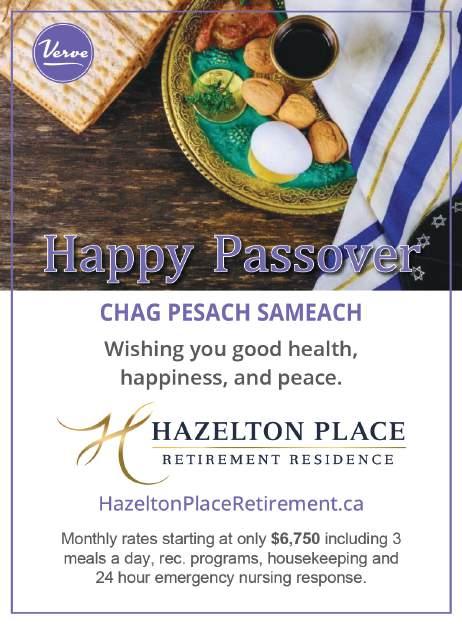


WHO
MAJOR PROJECT
THE PEAK YEAR of the first Industrial Revolution and its surrounding societal shifts was 1840, although the number has come to represent something different to Jewish podcast listeners. The director of education for the National Council of Synagogue Youth (NCSY) became the voice of 18Forty in 2020. And now he’s spent five years chronicling a different societal shift, the one playing out in the Jewish world between religious denominations, political differences, and varying opinions on the definition of observance.
“Promoters of Jewish unity are like ostriches with their heads in the sand not wanting to admit our differences,” he says. “I’ve watched this approach fail every time and it’s been failing even harder since October 7.” By talking to people who take their beliefs, whatever they are, seriously, this 40-year-old Modern Orthodox rabbi from Teaneck, New Jersey (who’s also an annual High Holidays fixture at Kehillat Shaarei Torah in Toronto) only demands of his diverse interviewees that they “show their work.” He’s now been doing it for long enough to begin navigating a touchy topic: the range of opinions on how converts are defined. Like all Jewish media outlets, 18Forty had its train of thought derailed by external shock last year, but the agenda is turning back to community again. “The reason to fight antisemitism,” he says, “should be so that we can focus on Judaism.” Marc Weisblott




Conditions treated:
• Chronic Pain
• Fatigue
• Digestive Conditions
• Allergies
• ADHD
• Environmental Illness
• Cardiovascular Disease
• Diabetes
• Neurological Conditions
• Cold and Flu
• Skin Conditions
• Weight Management
• Stress Management
• Depression/Anxiety
• Smoking Cessation
• Pediatric Health concerns
• Women’s/Men’sHealthconcerns andmore...
Naturopathic Medicine iscovered under most groupbenefit healthplans



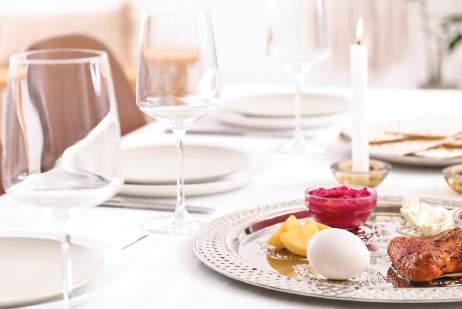
































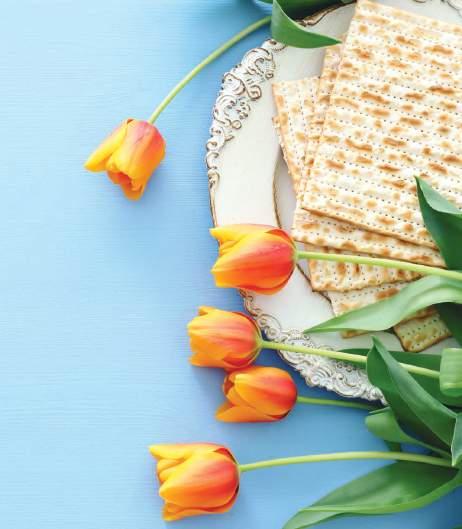

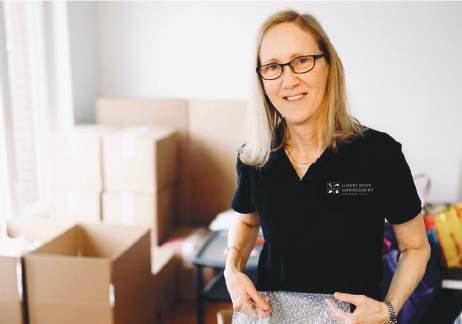


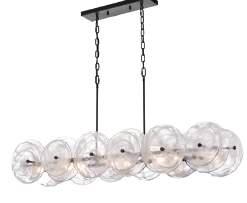

















































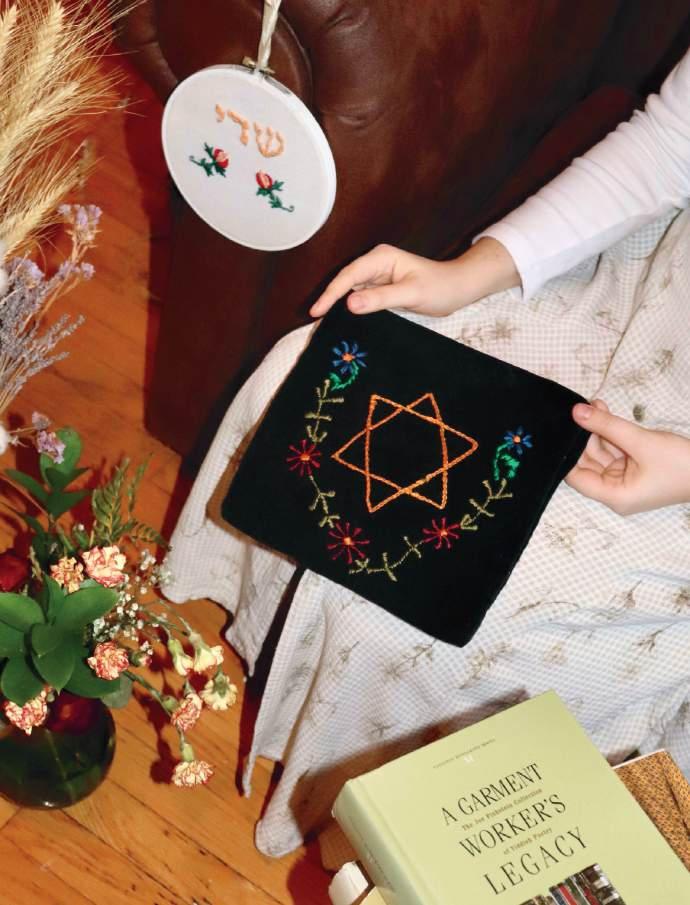
Claire Sigal finds connection through a needle and thread.
THE TRADITION of gifting a tefillin bag to your betrothed as an engagement gift was embraced by Claire Sigal’s great-grandmother Clara because she was a needleworker and Max, her husband-tobe, was a scribe. It was from those legacies that the 25-year-old found a way to physically manifest her love of Hebrew calligraphy, which she explored as her Montreal family moved to Calgary, and embraced even further as she rebounded back to attend McGill University, and make connections related to the Jewish heritage of her birthplace. Subsequently, she found even greater resonance in using a needle and thread, drawing inspiration from the work of her forebears. “It’s the experience of moving the same way that someone else moved,” she says about following the patterns. “I get to understand how her hands achieved a certain kind of stitch, how long it would’ve taken her, and how tired she was.” A pattern she created based on the Magen David and accompanying flowers that provided protection for phylacteries captured her favourite inspiration for embroidery. This year, she also led a McGill workshop monogramming bookmarks in tribute to Joe Fishstein, a garment worker who left behind an exhaustive collection of Yiddish poetry. Claire’s own ambitions include creating a parochet (the curtain covering the ark at a synagogue) and creating ketubbot for a bride, groom, and their witnesses. But there will forever be other stitching tales to explore. “Replicating these embroideries,” she says, “feels like living history.”
Marc Weisblott

